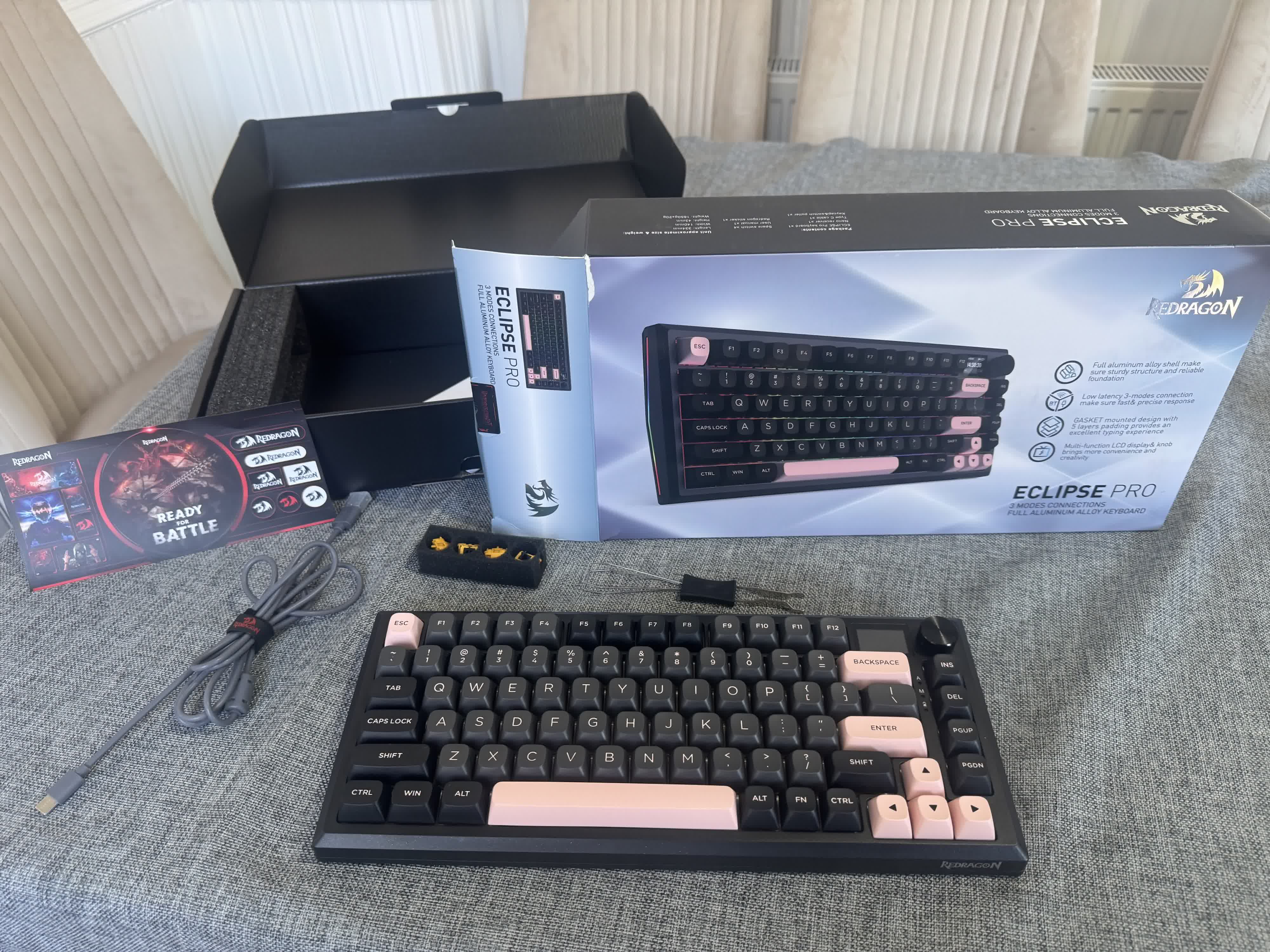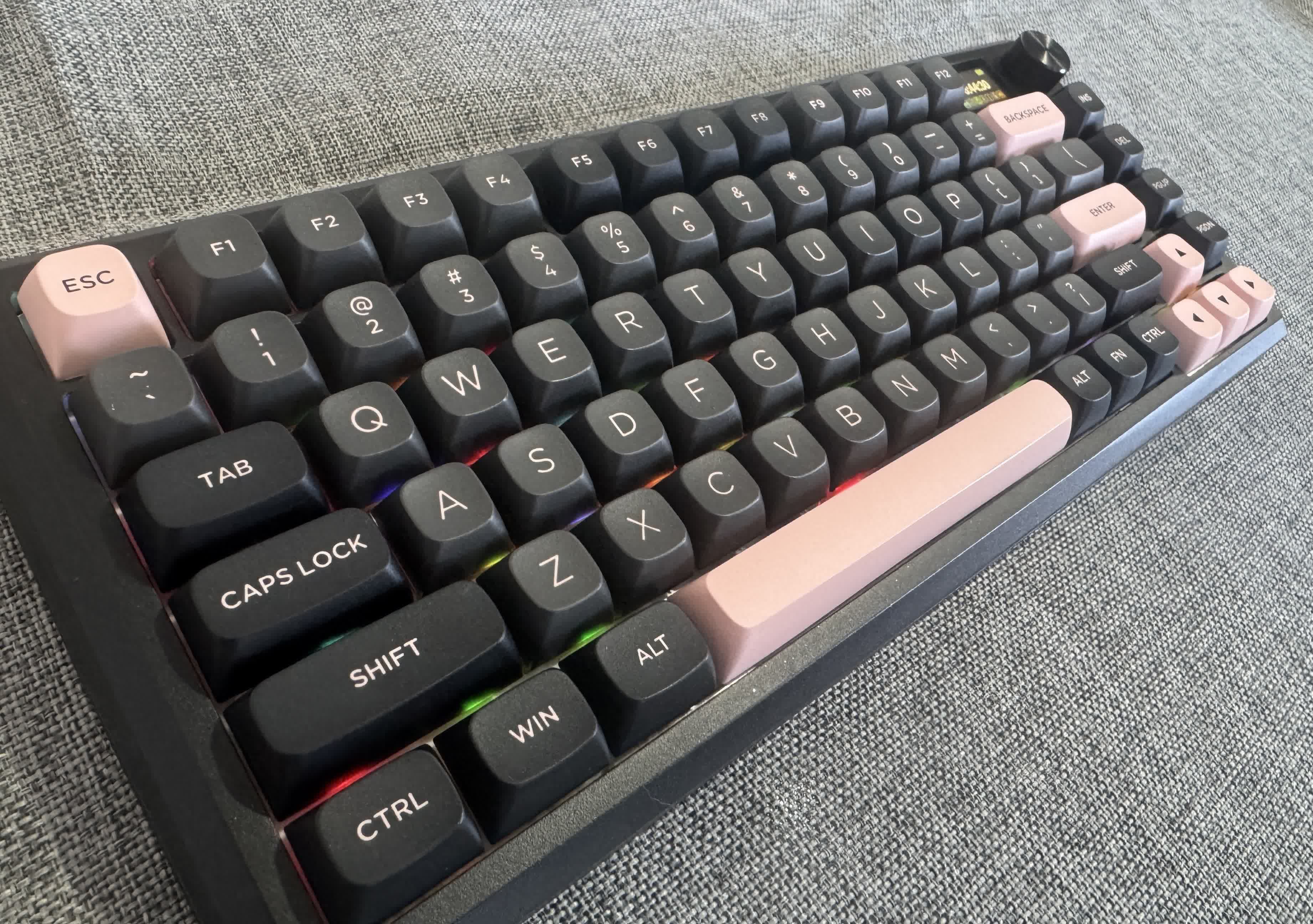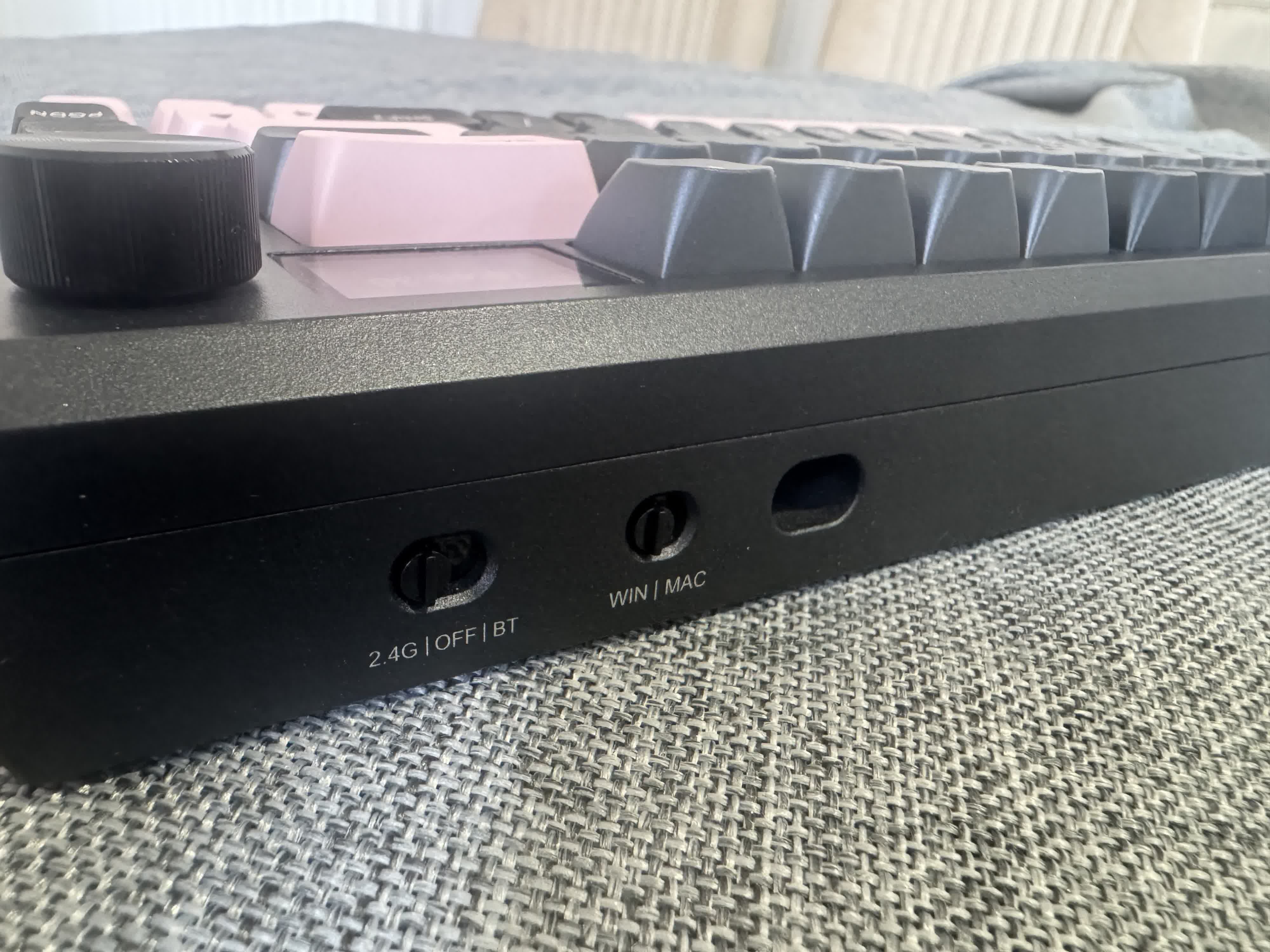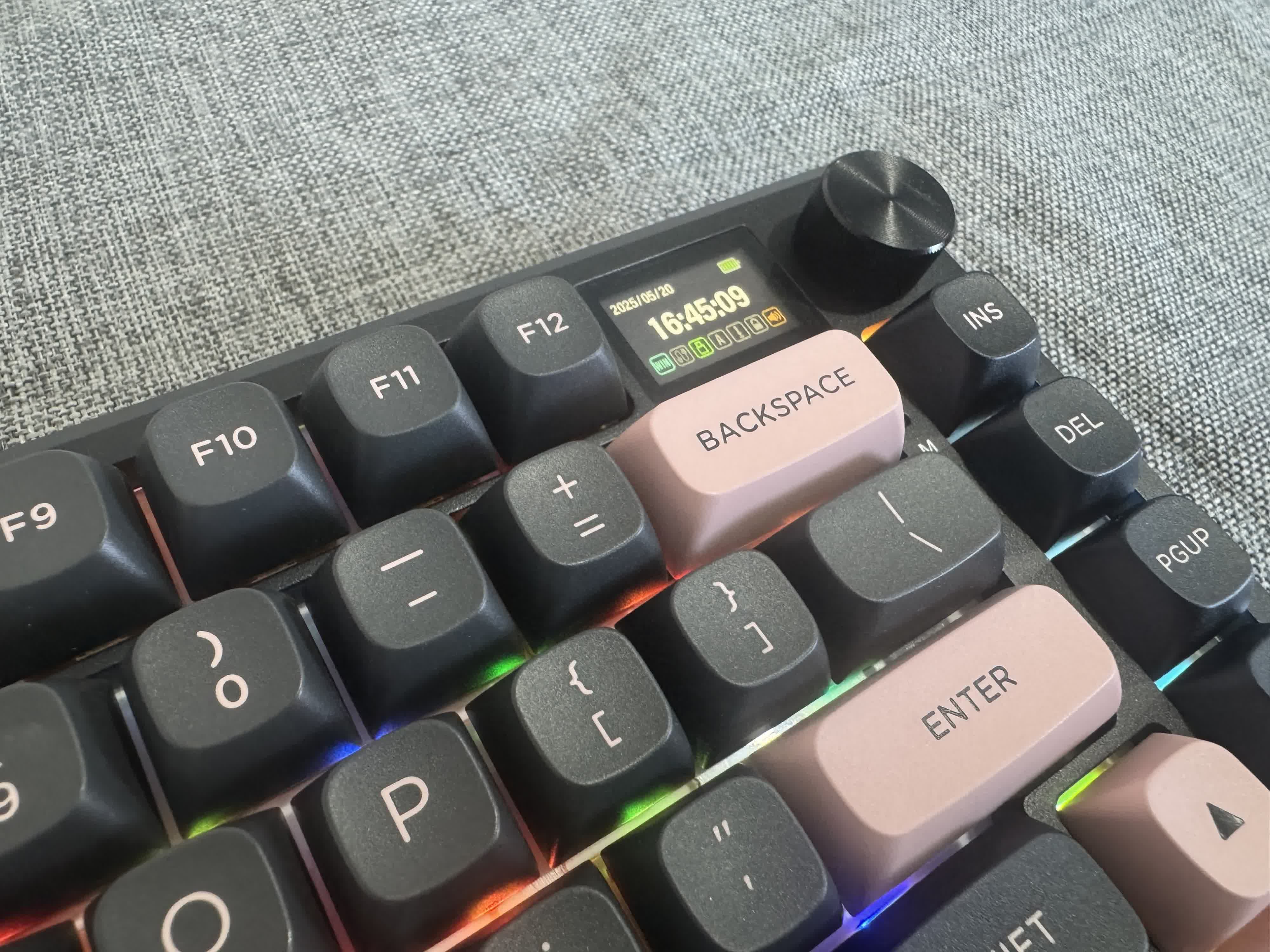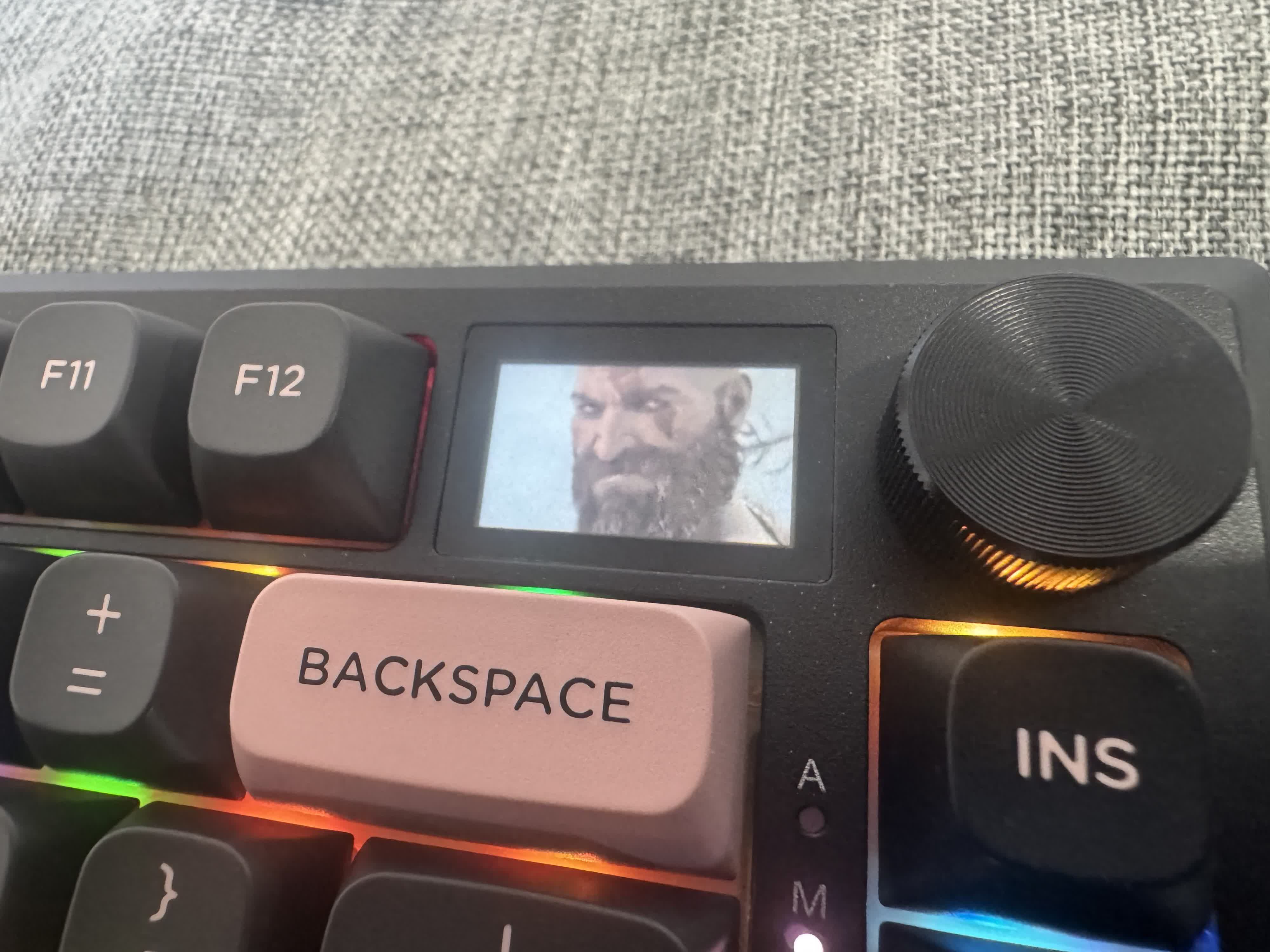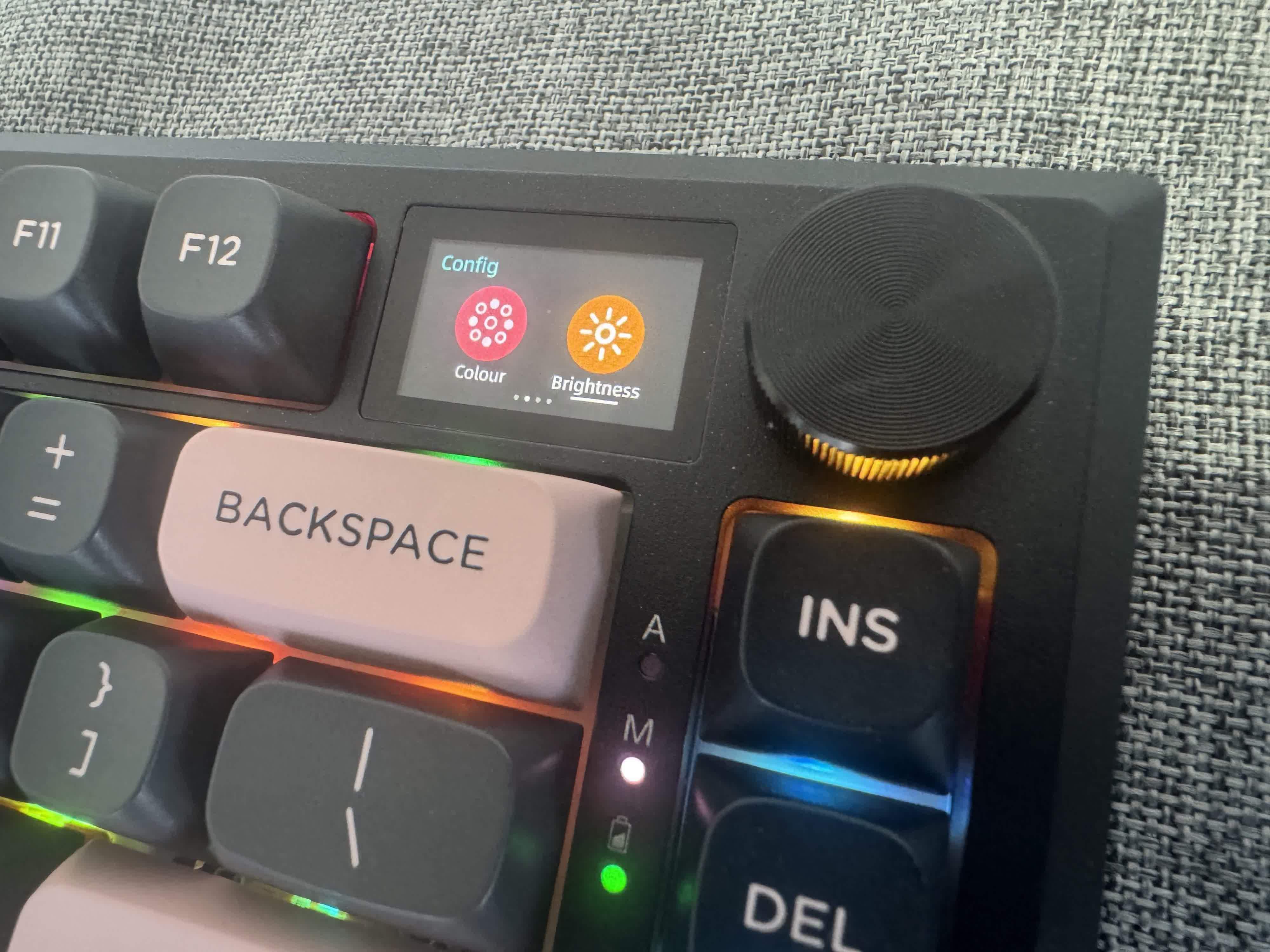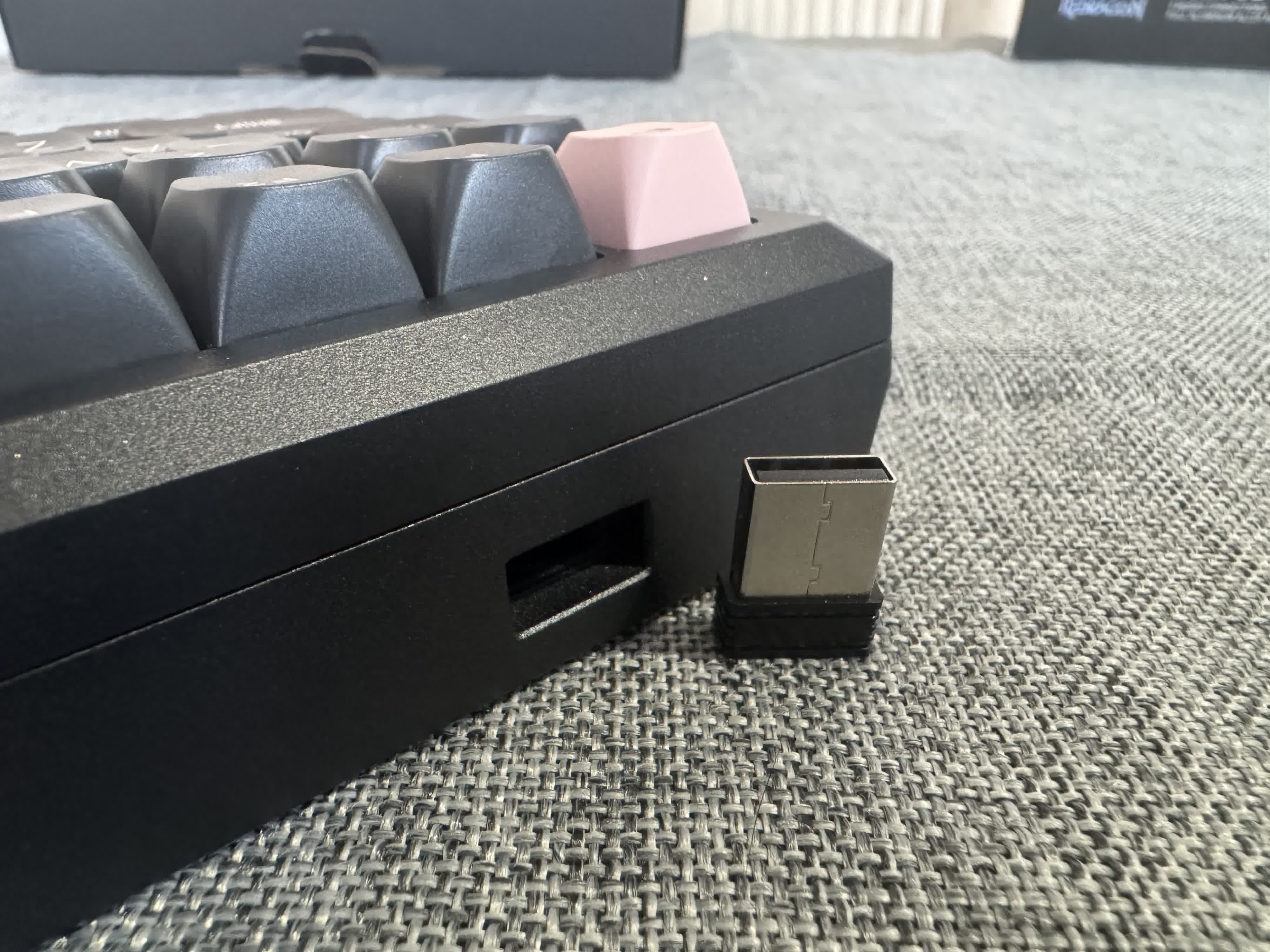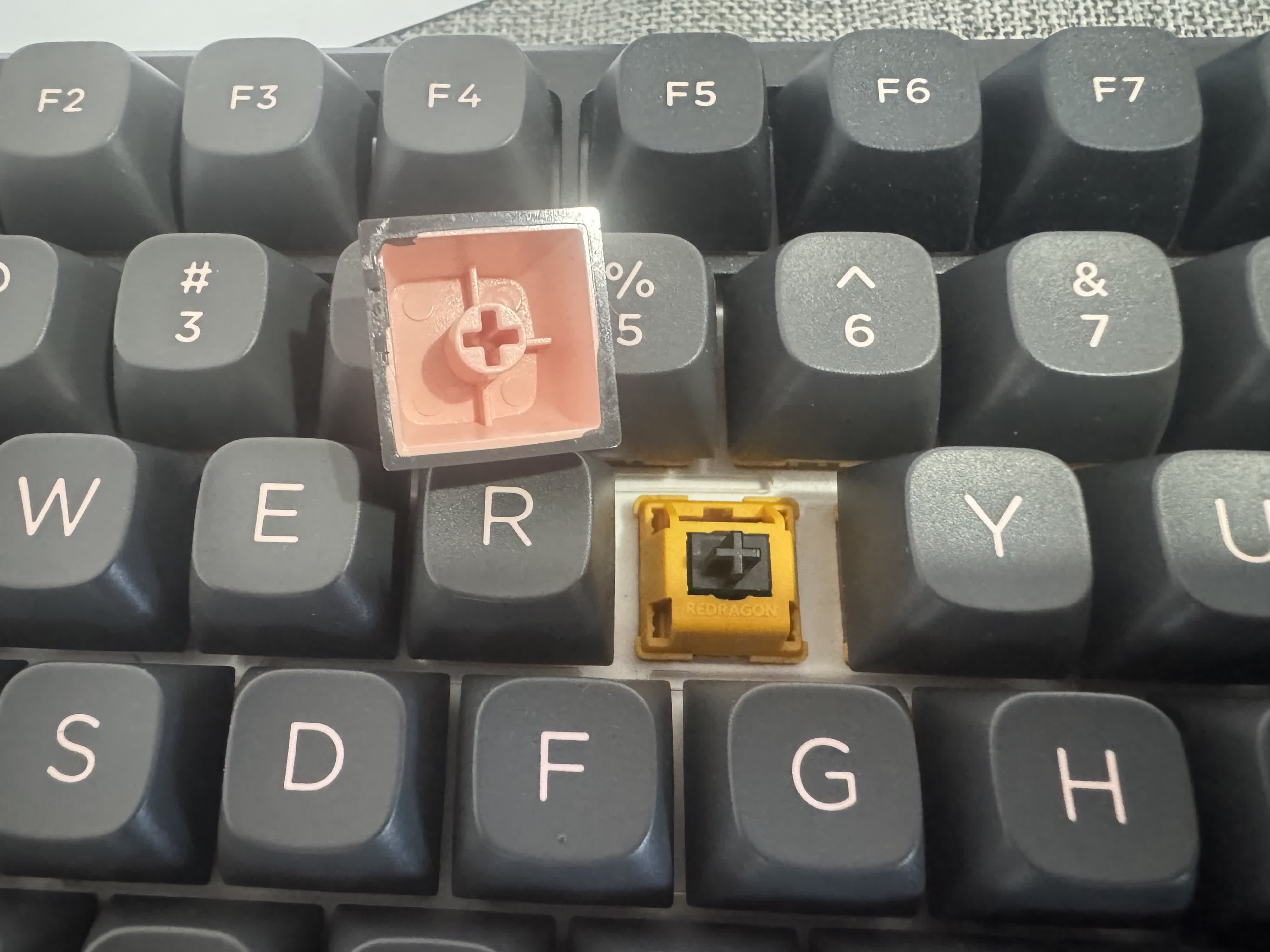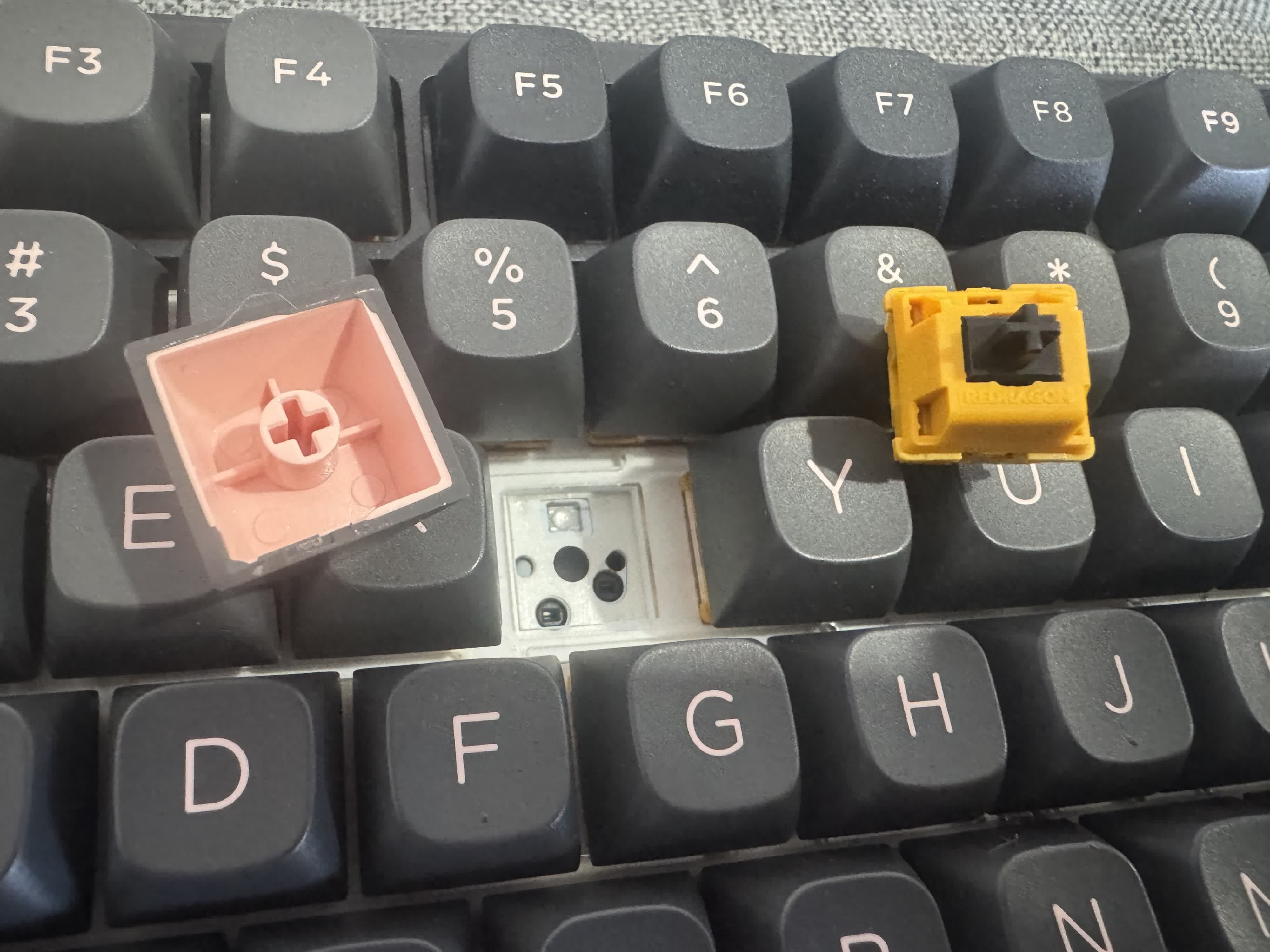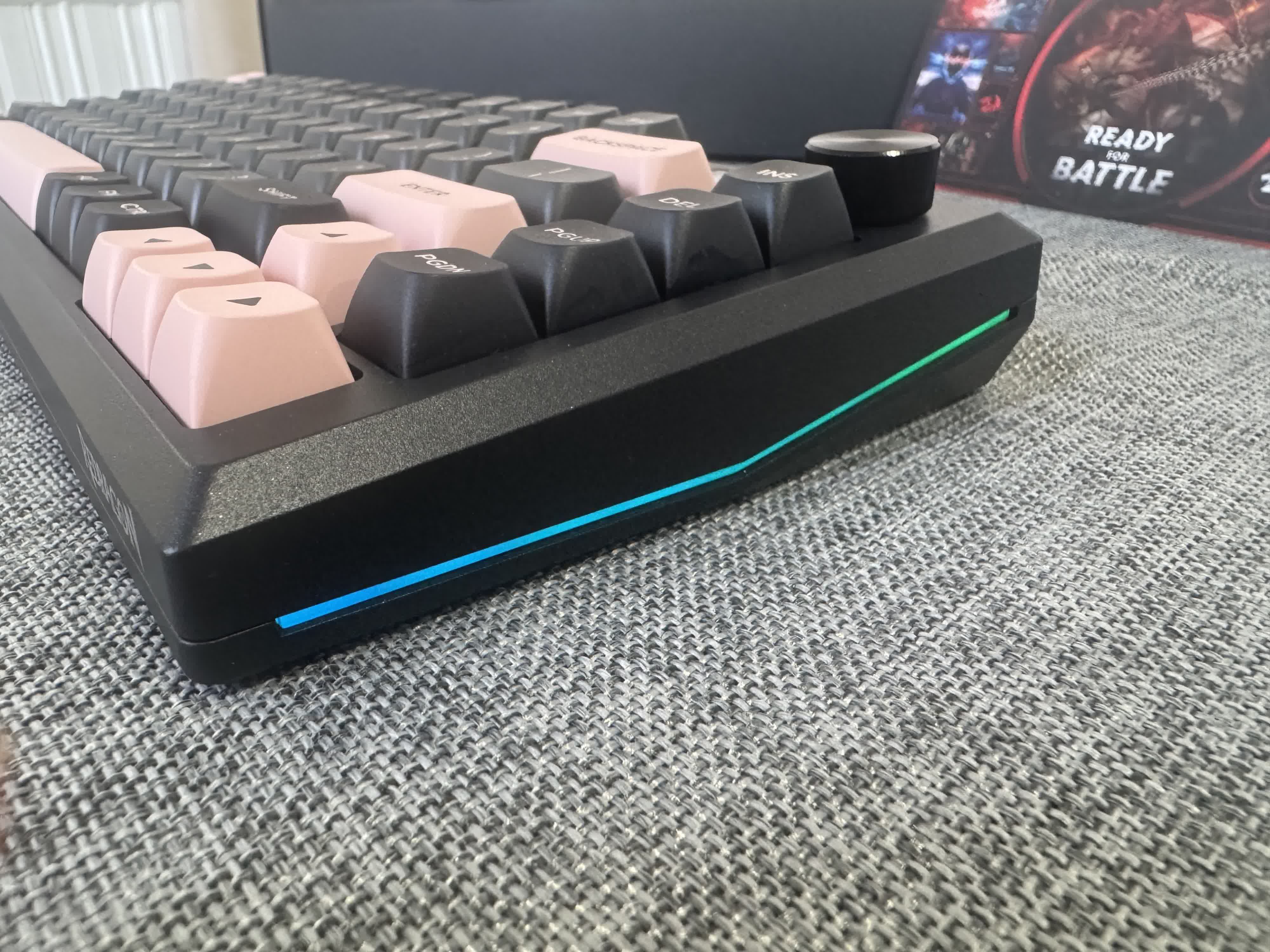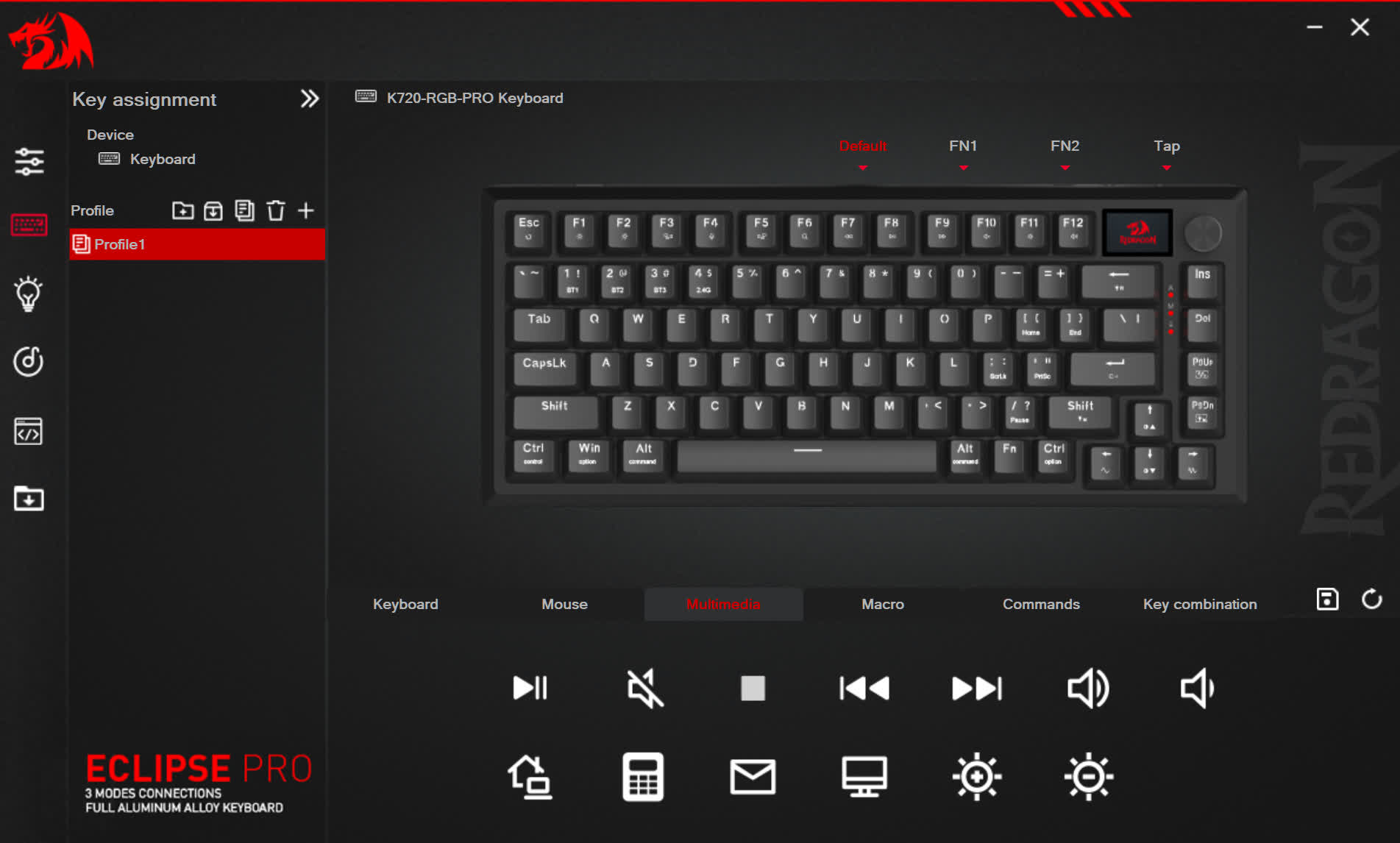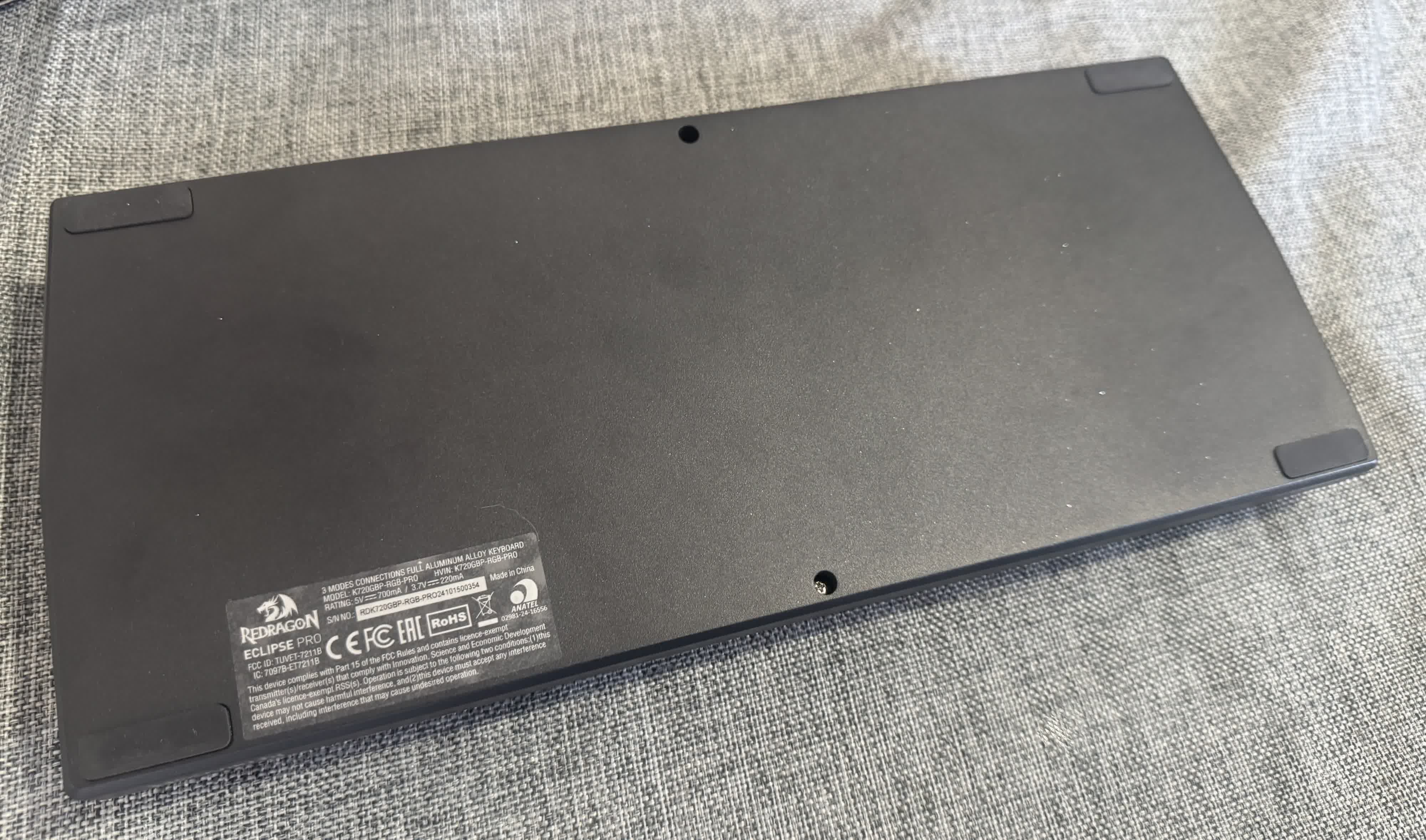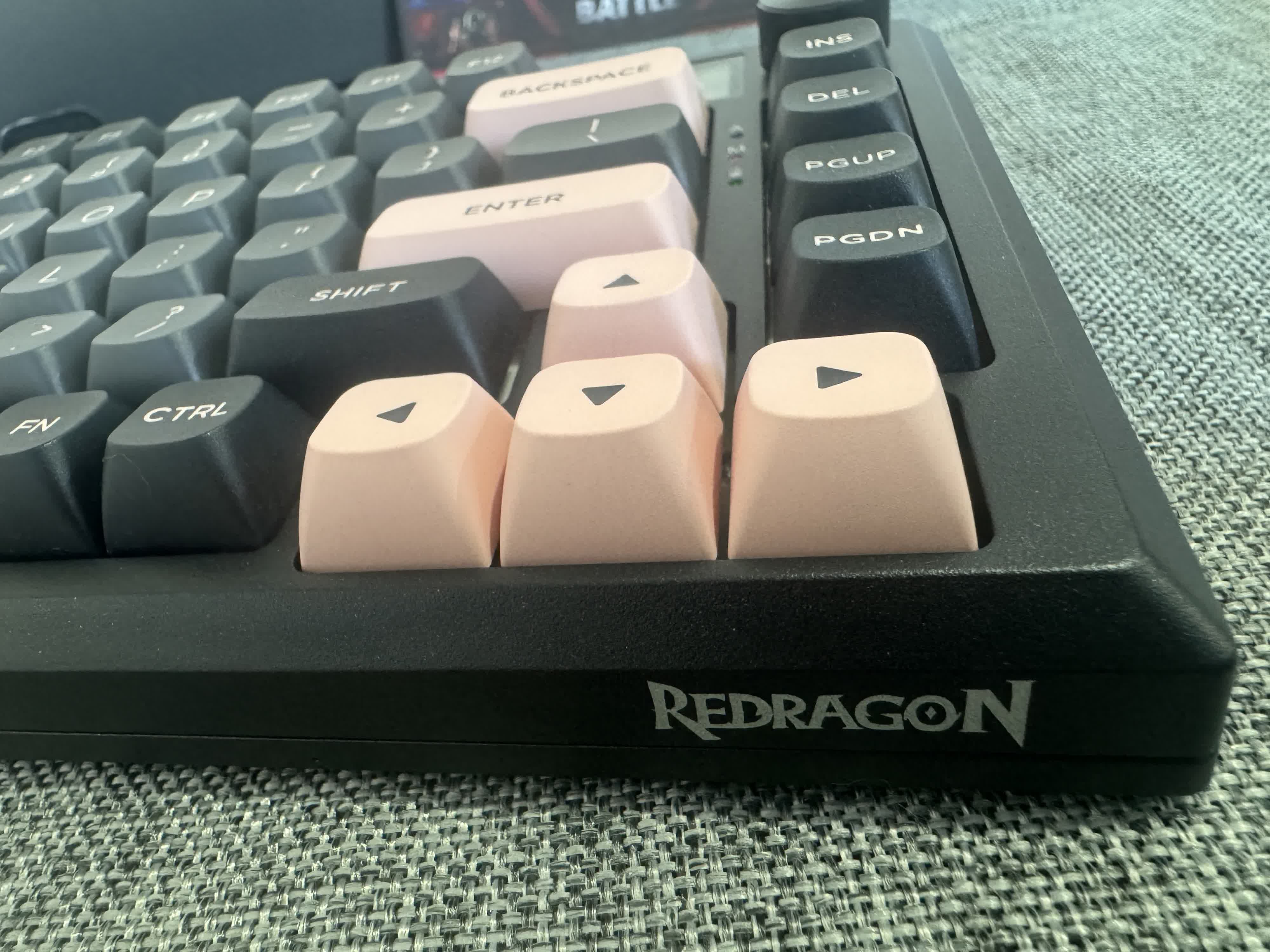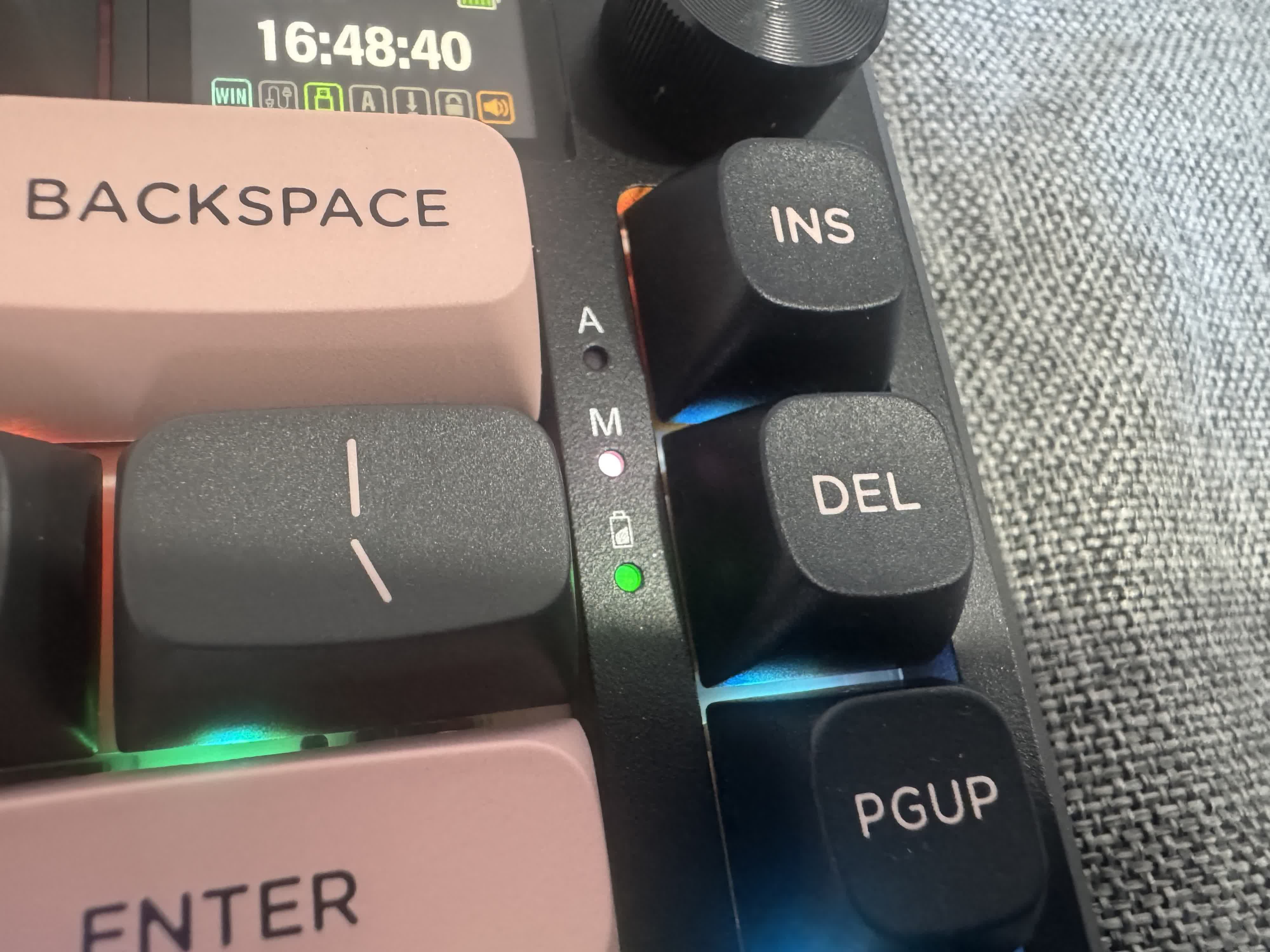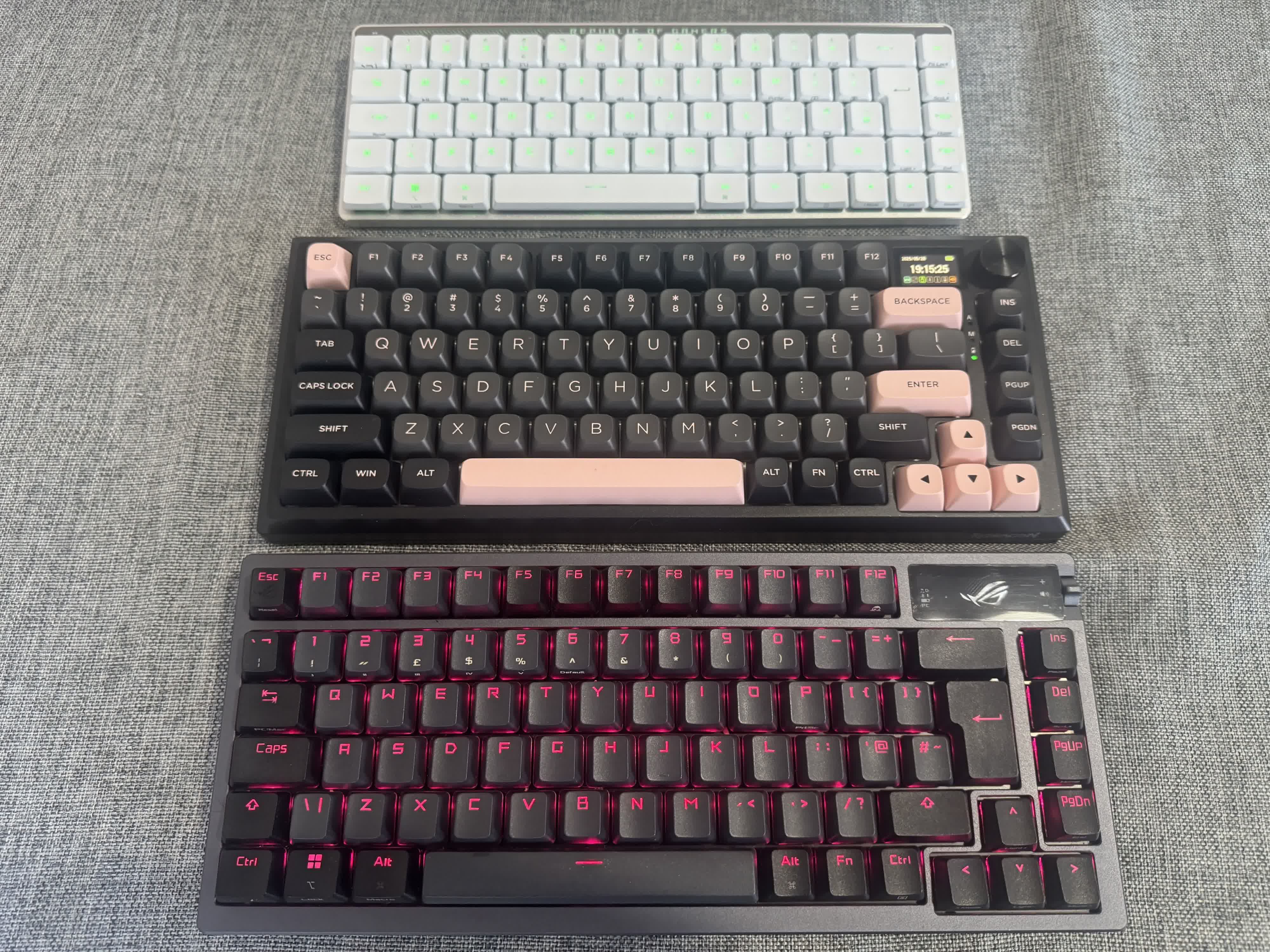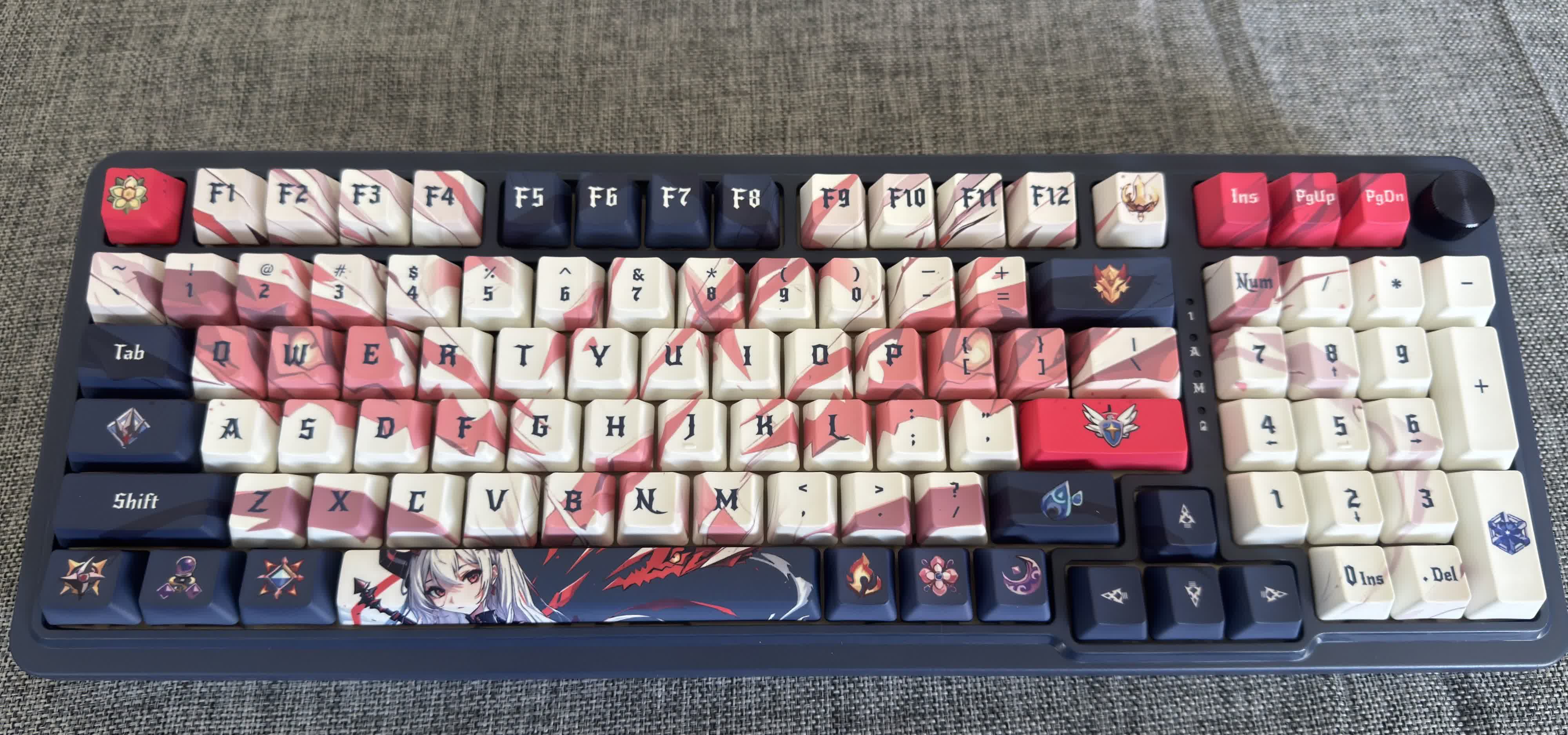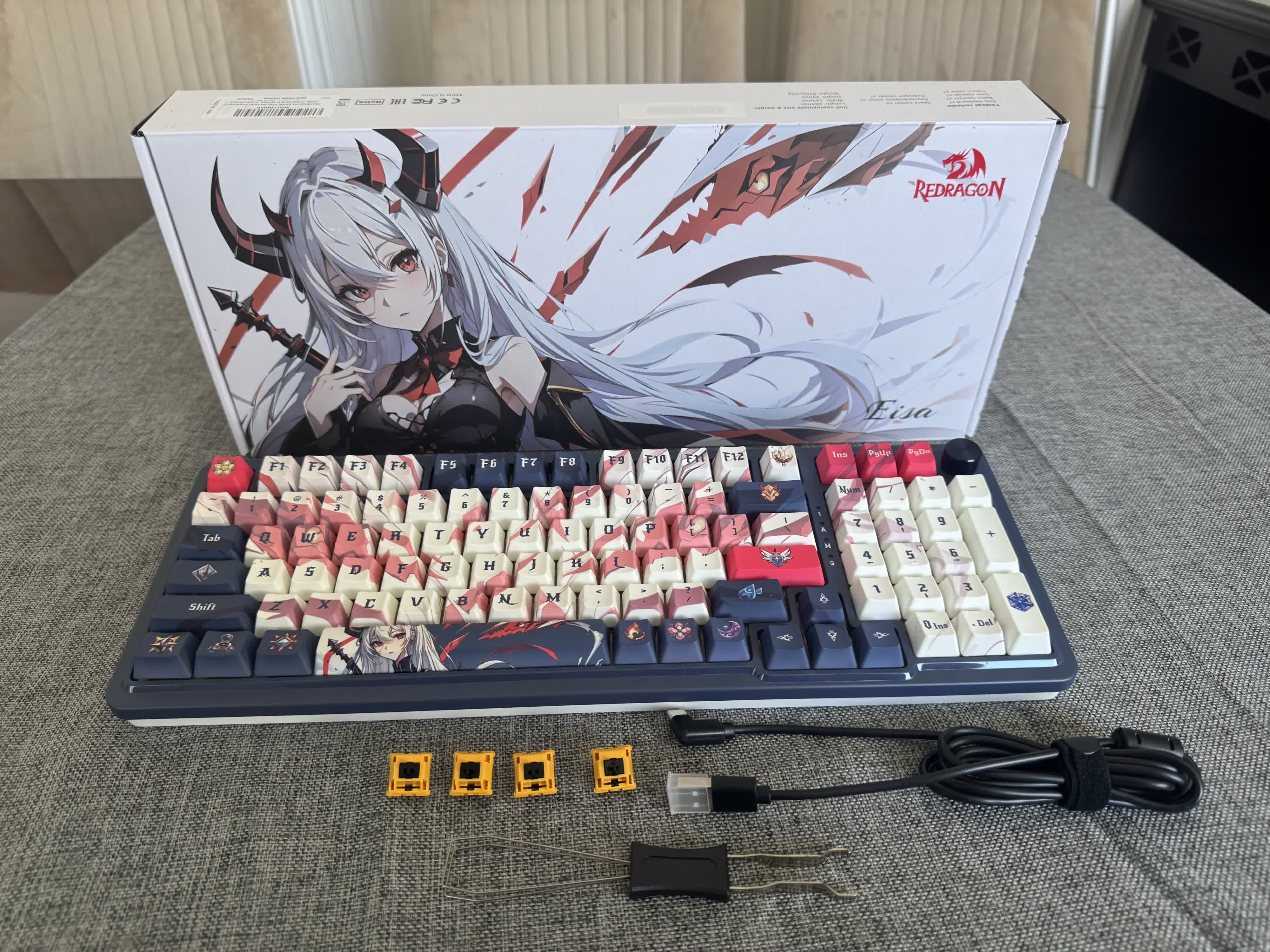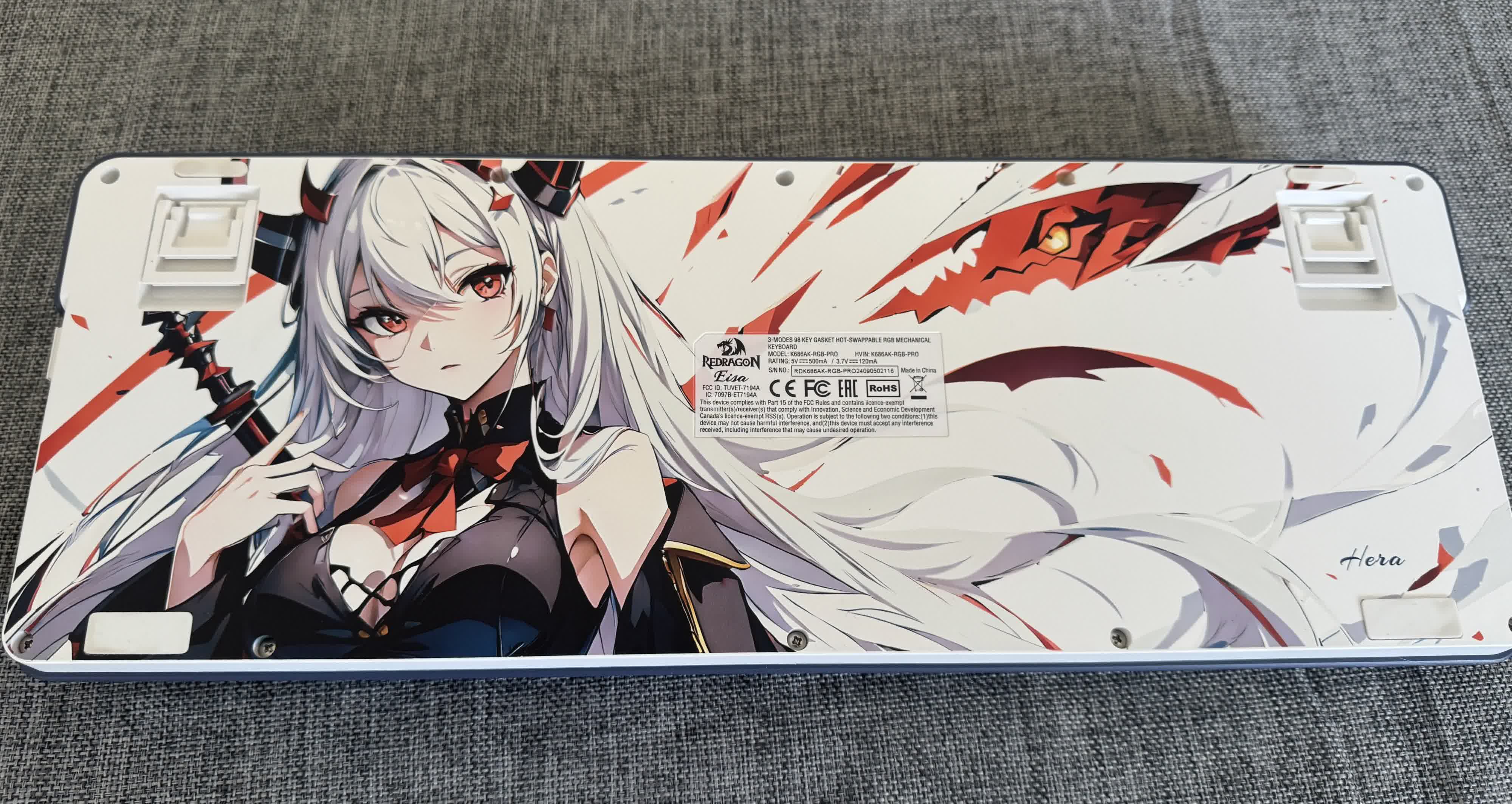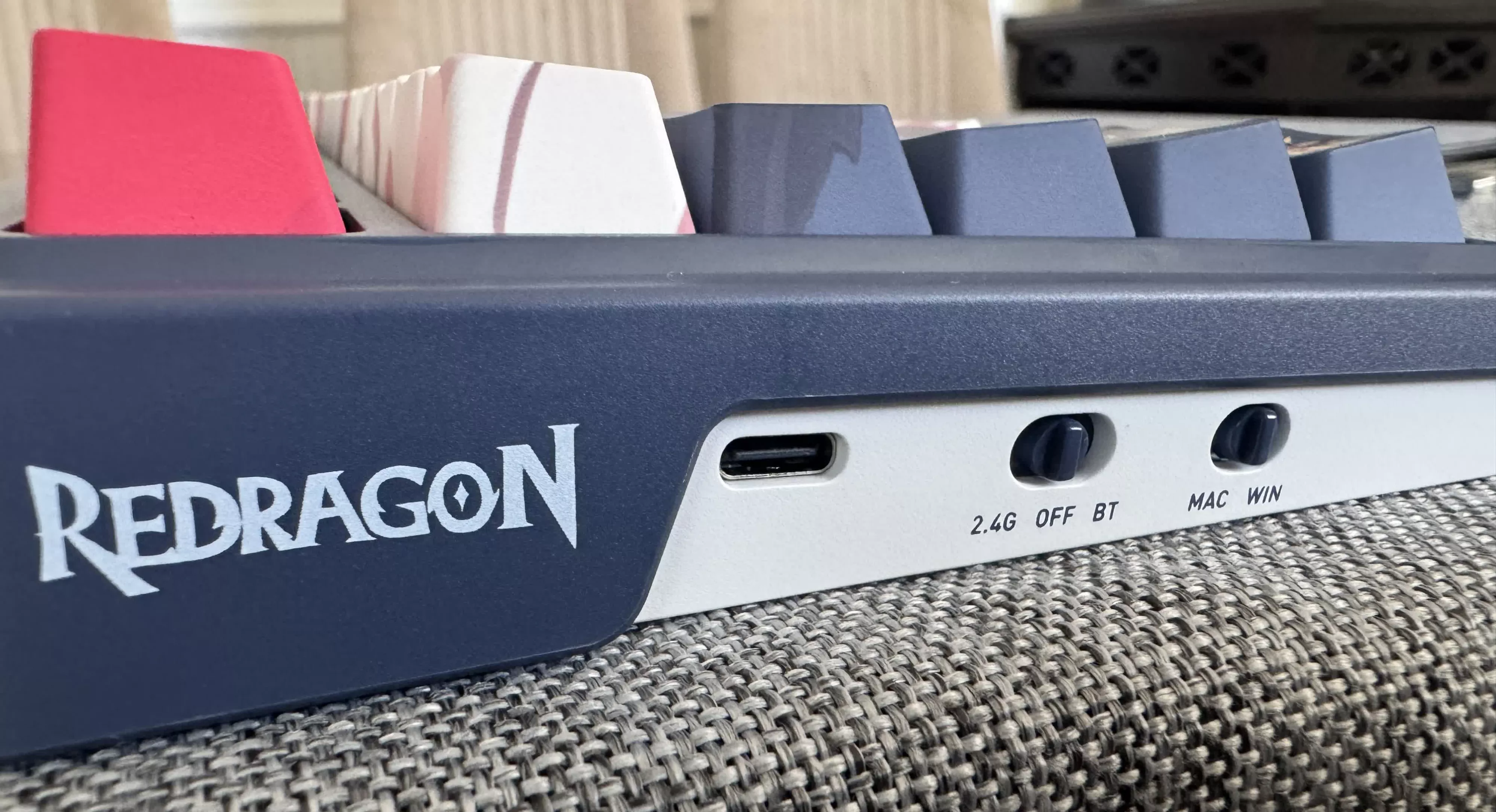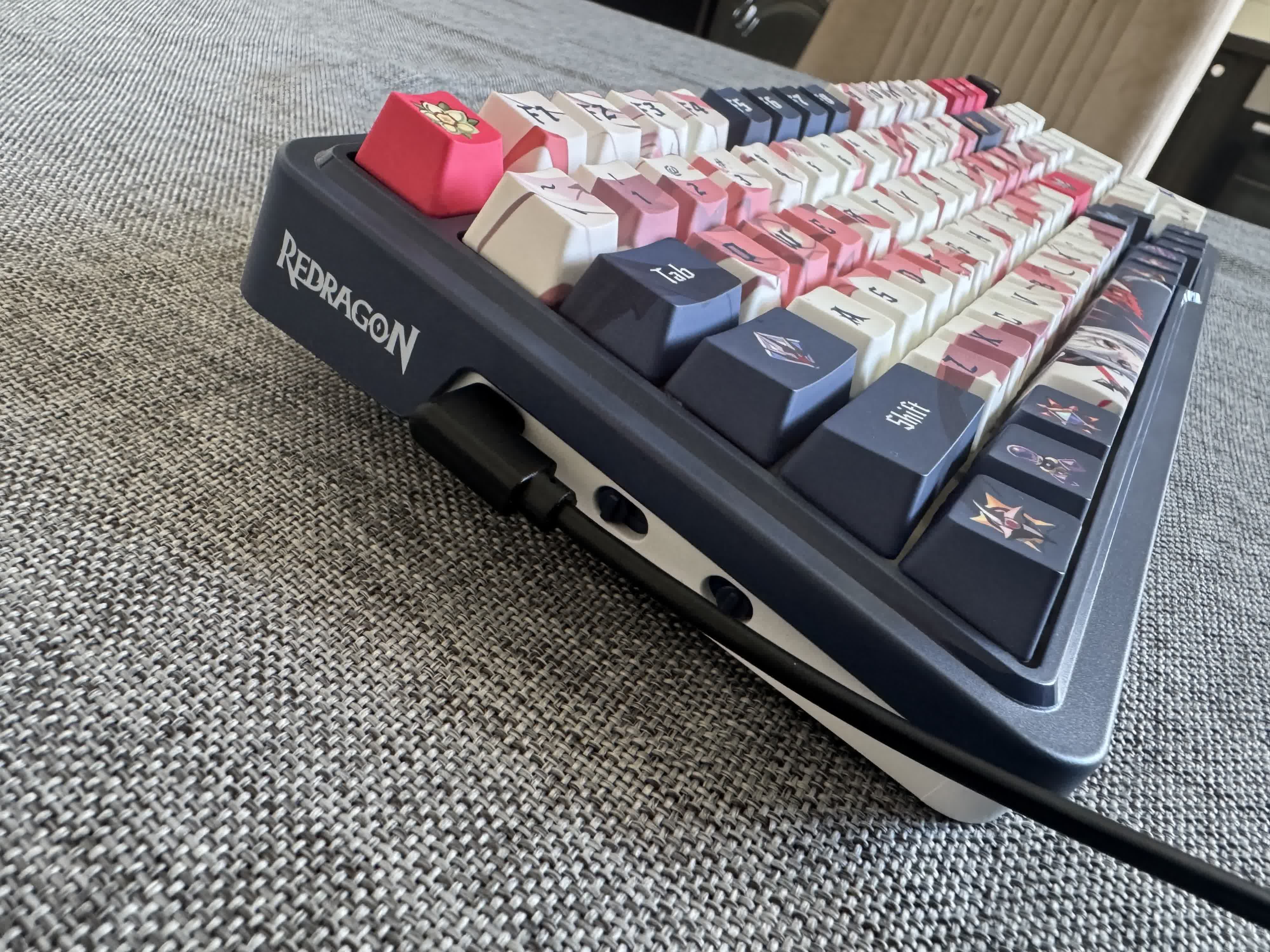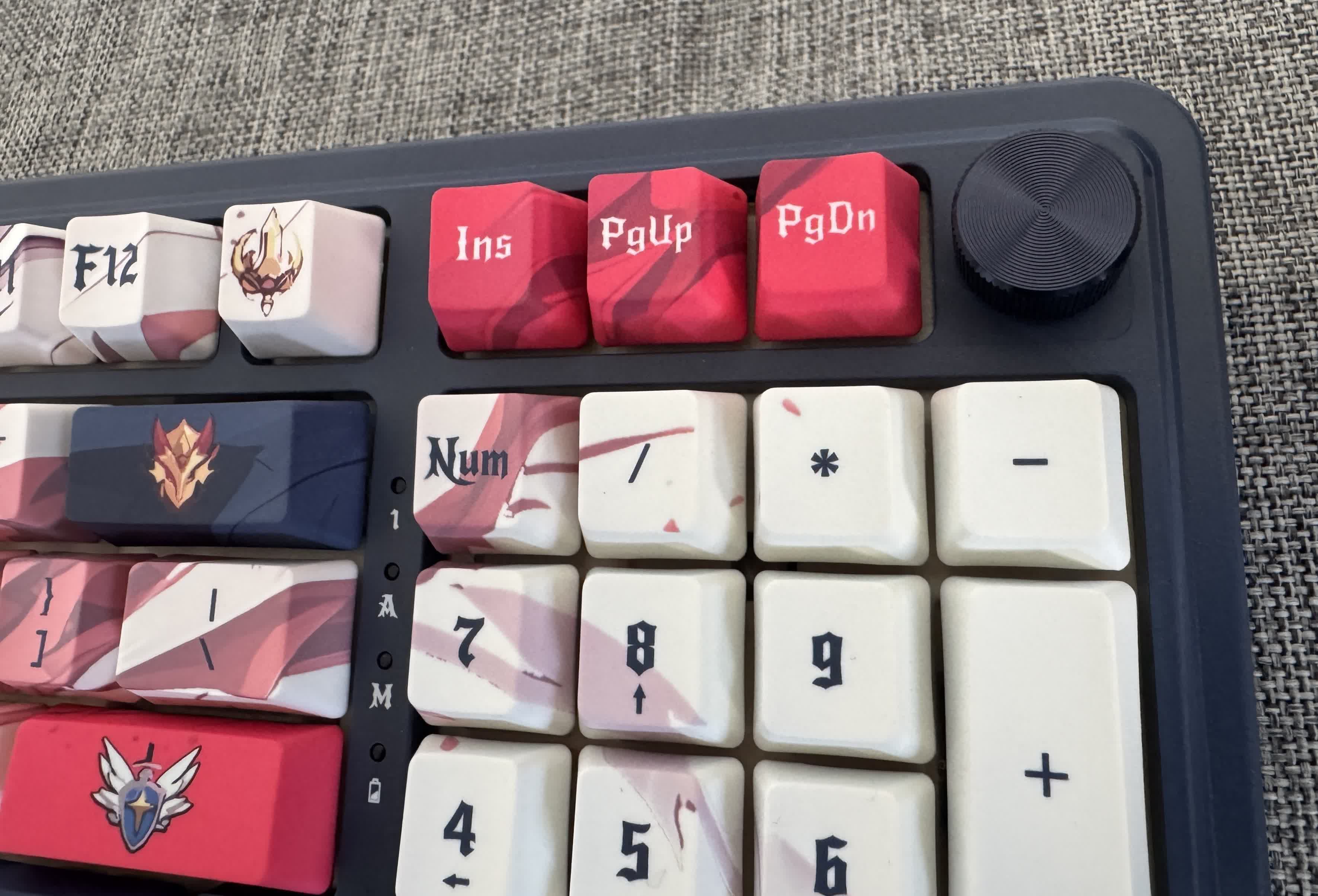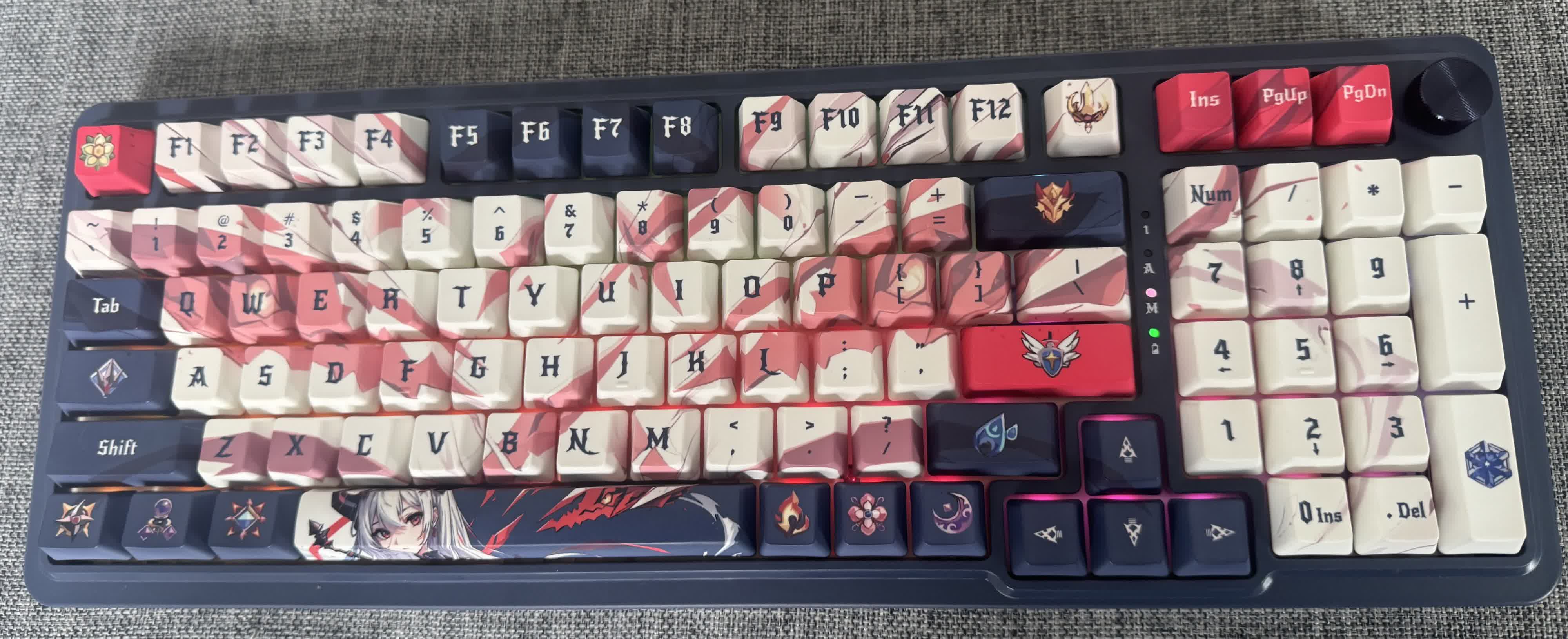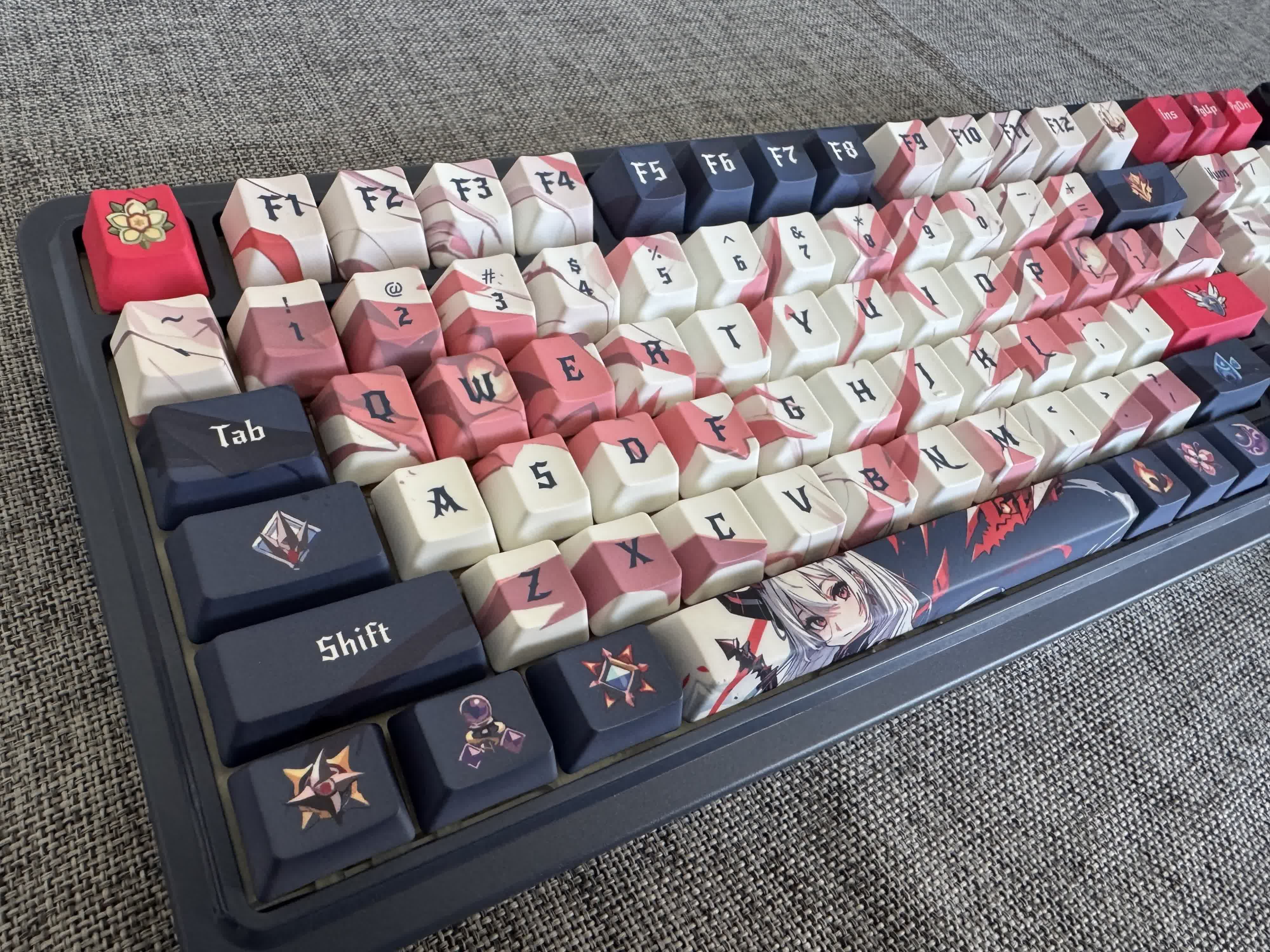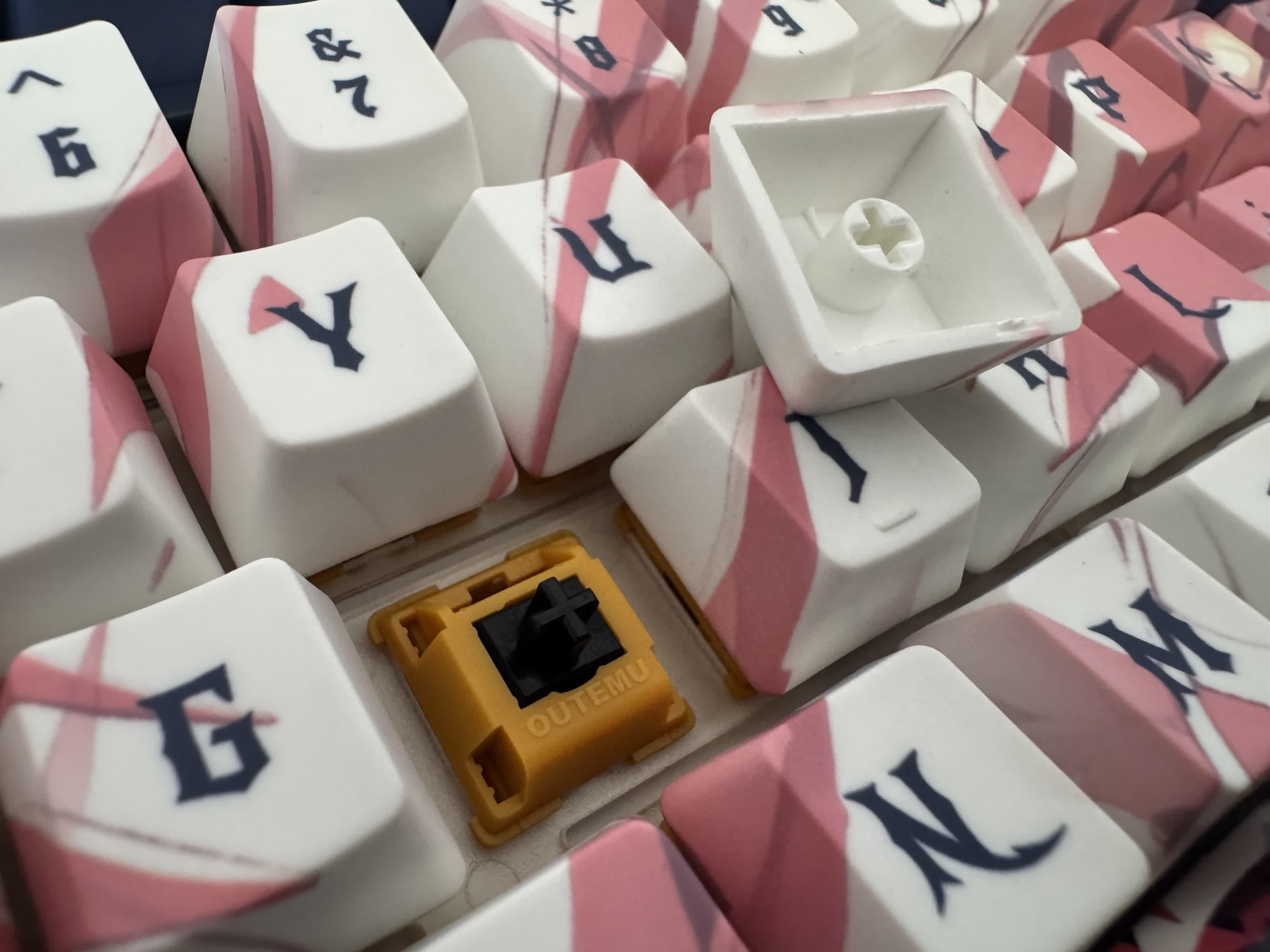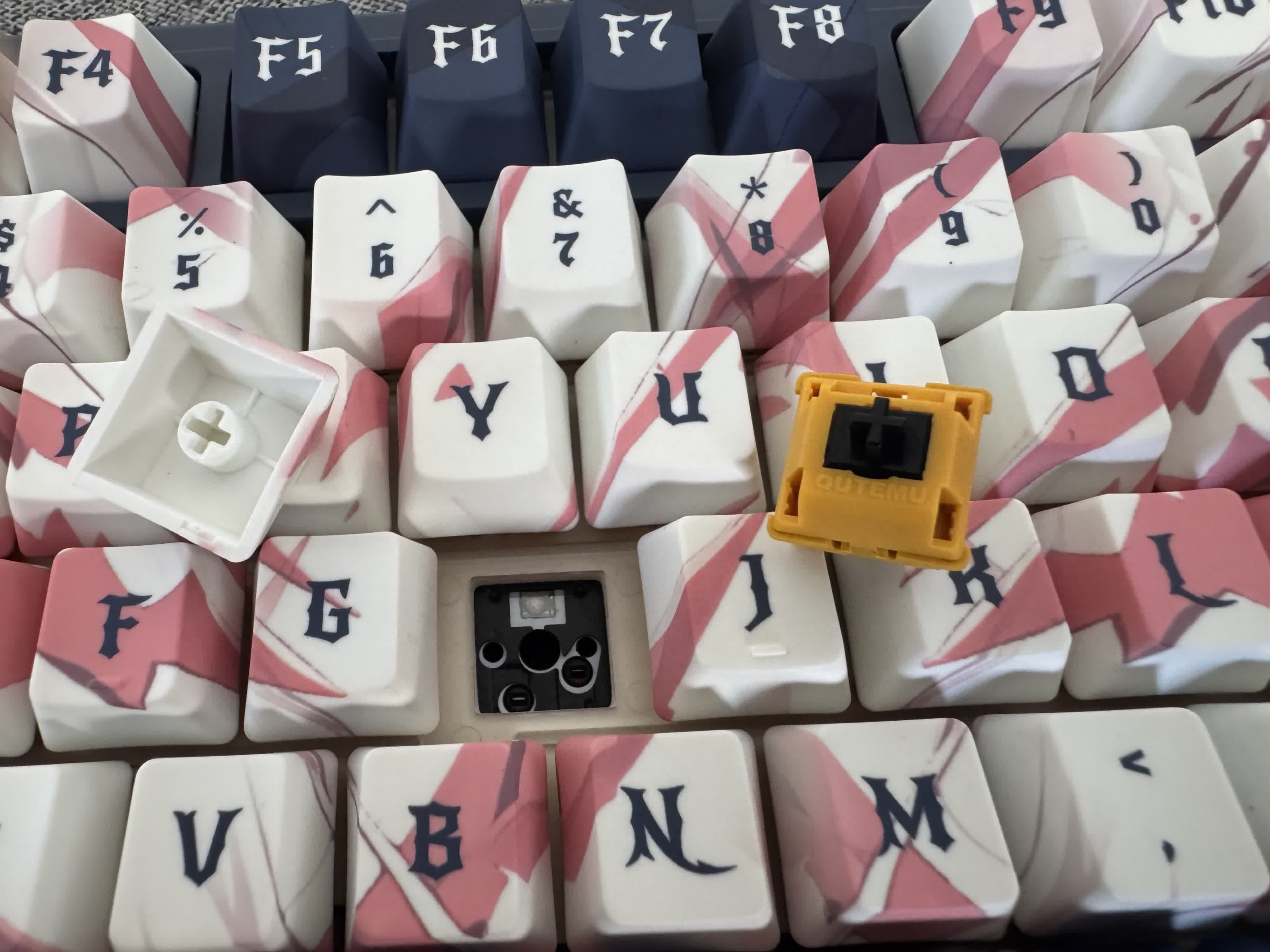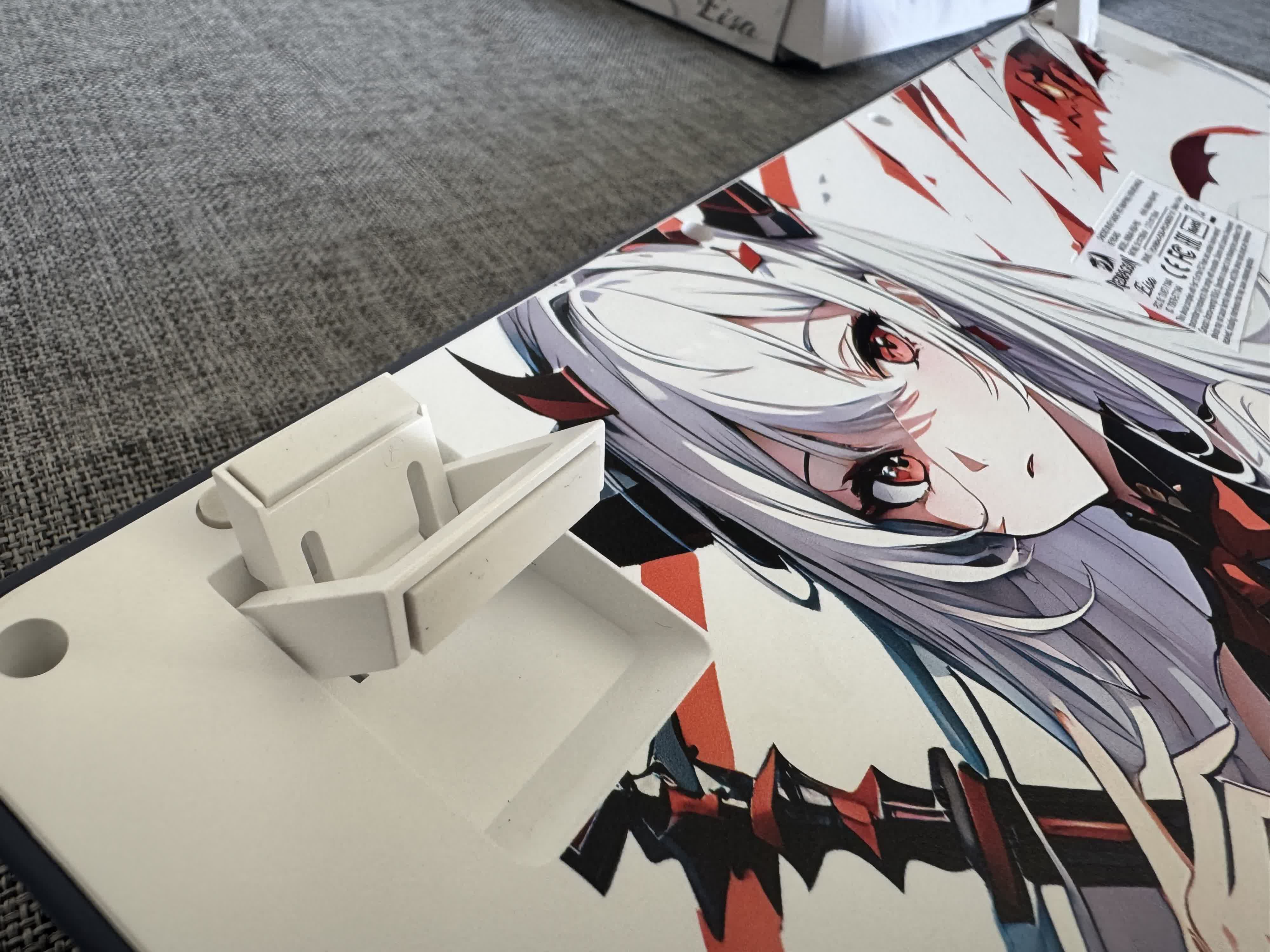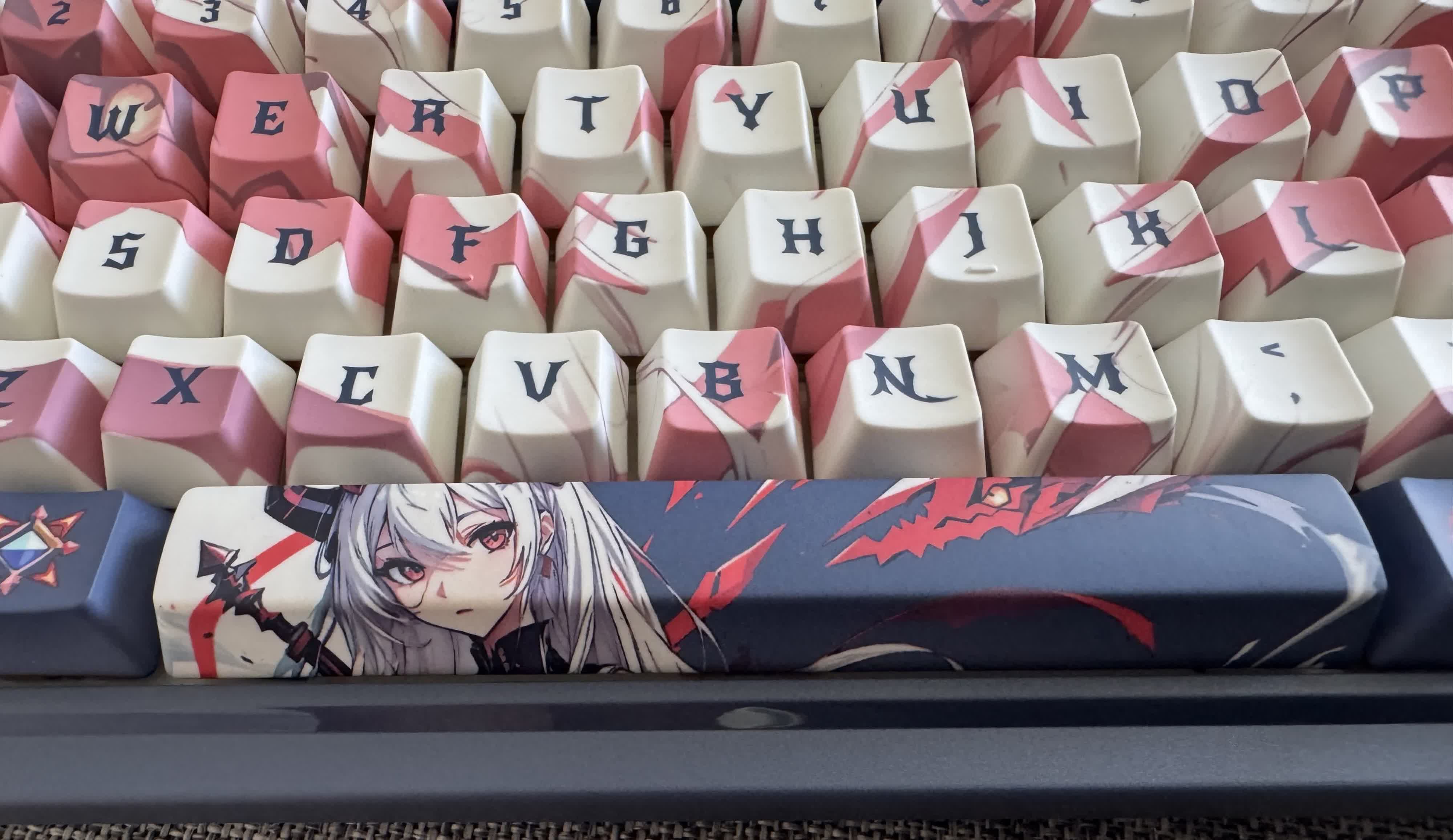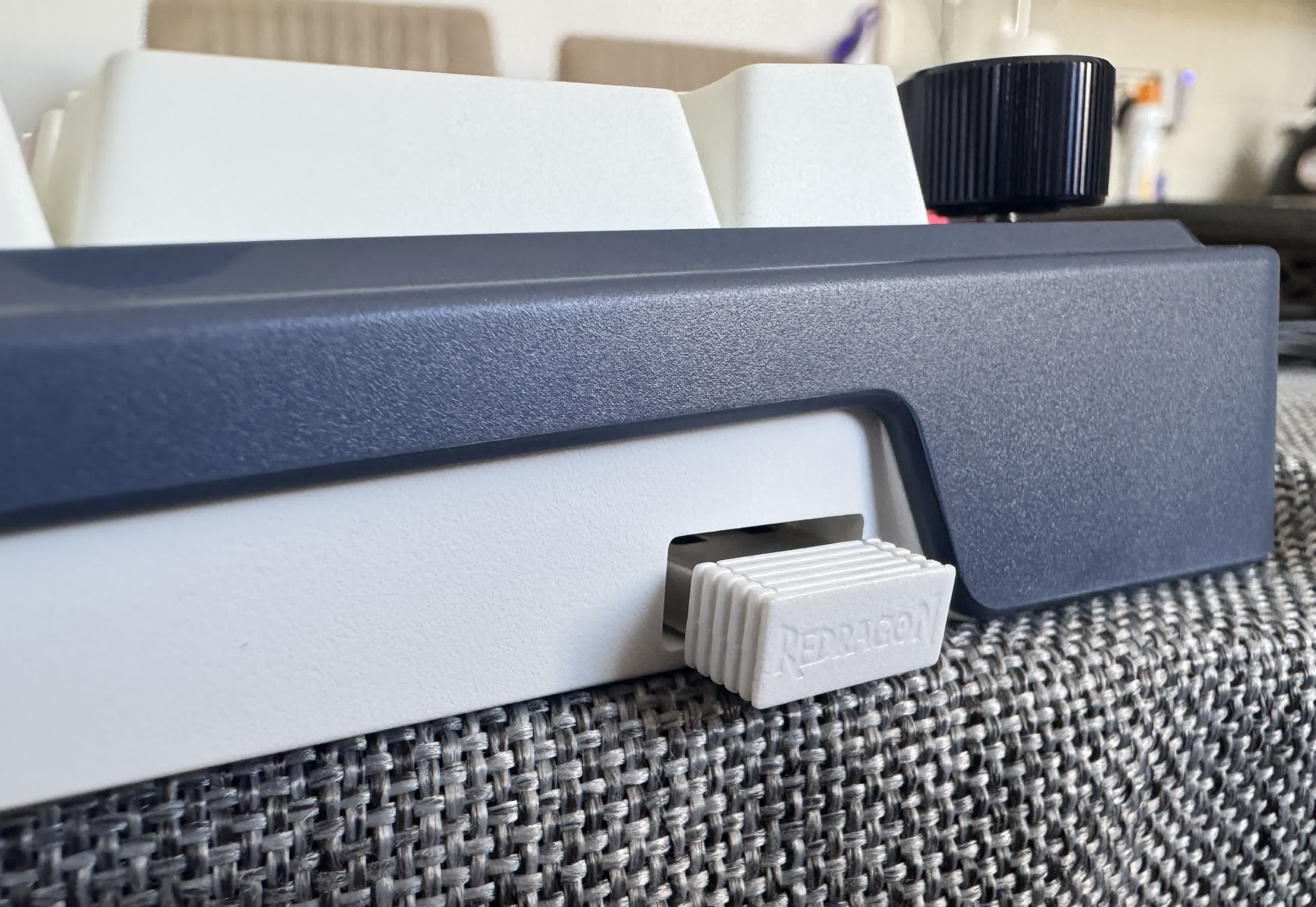When it comes to budget peripherals, many people have negative preconceptions. While the old idiom “you get what you pay for” often rings true, there are still some genuine bargains to be found.
Chinese company Redragon is known for its extensive line of aggressively priced PC products. It really does sell everything, from cases, monitors, and components, to accessories such as mice and keyboards. You might have seen LinusTechTips’ All Redragon setup video earlier a few weeks ago, in which he was impressed by most of the items – especially the keyboard.
Redragon sells an absolute ton of them, covering different styles, sizes, and switches. They range in price from as low as $20 to around $100. Today we’re taking a look at two: the Eclipse K720 Pro which sells for about $100, and the K686 Pro SE Anime which has been reduced to $55.
Redragon Eclipse K720 Pro
I was particularly interested in the wireless 75% Eclipse K720 Pro as it reminds me of the Asus ROG Azoth, which I love. The Asus board has a similar style, right down to the screen and knob in the top right corner.
And while the K720 Pro’s current sale at $90 is far from budget, it’s less than half the Azoth’s $250 price (there’s also an Extreme version of the Asus priced at a monstrous $500).
One of the things I like about the Asus Azoth is the satisfyingly heavy 2.6-pound weight, giving it a sturdy and premium feel. The Eclipse K720 Pro, however, makes its rival seem light by comparison. It weighs in at a laptop-like 3.5 pounds – something that’s obvious if you try to hold it in one hand – despite measuring just 13.5 x 5.51 x 1.69 inches.
While this might not be ideal for portability, it highlights just how incredibly solid and well-made the Eclipse is. It also helps keep this smaller keyboard steady when hammering away on its beautiful keys. Inside the well-packaged box are four spare switches, a keycap/switch puller, a USB-C to USB-A cable, and some obligatory stickers.
Features
The keyboard is made from “tank solid” CNC aluminum, hence the weight. Like most wireless models today, it has a dongle hidden in a slot at the back for 2.4GHz connectivity. There’s also a Bluetooth mode and the standard wired option. Alternating between these and turning off wireless is done via a switch on the rear. There’s also a switch for PC and Mac modes.
Like the ROG Azoth, this is a gasket mount keyboard. That means the switch plate is suspended inside the case on strips of compressible material (gaskets) rather than screwed directly to the chassis. It also has five layers of dampening foam: 3.5mm PO foam, IXPE switch foam, PET sound pad, bottom socket foam, and silicone bottom pad.
The keyboard uses Redragon’s custom Hi-Fi switches. These pre-lubed linear switches and are fantastic, in my opinion, but if you don’t like them, they can be hot-swapped with almost any 3-pin or 5-pin switches.
Probably the biggest highlight of the K720 Pro is the 1.4-inch color TFT screen in the top corner and the satisfyingly chunky, clickable knob that controls it.
The screen normally shows the time and keyboard information, such as connection mode, battery level, and date. You can also change this to show GIFs that can be imported and modified using Redragon’s software.
Twisting the knob adjusts your PC’s volume, which is always handy. Pressing it opens access to a slew of RGB customization menus, including lighting effects, colors, brightness, effect speeds, and language selection. You can also switch between displaying the main screen and a GIF.
Battery
Redragon doesn’t explicitly say how long the 4,000 mAh built-in battery lasts in the Eclipse K720 Pro. It all depends on your penchant for RGB and how bright you prefer it.
Mine lasted about three days when using it for 8-10 hours per day at max brightness with the TFT screen active almost constantly. Reduce the brightness level by half and set the screen to turn off after a few minutes of inactivity, and the battery life can extend to more than a week.
Charging to full capacity does take a long time – at least it does from when plugged into a PC. And the screen doesn’t show a percentage, just a filling battery icon, though you can hold down Fn + Ins to see an RGB-based power indicator under the number keys: the more keys that light up, the higher the remaining charge.
Typing
So, the K720 Pro looks good, with its Sakura pink keycaps mixed in with the light greys. It feels good thanks to the hefty weight. And the screen is a cool addition that adds an extra level. But that’s all useless if it’s awful to type on.
But here’s what surprised me most: I find the K720 Pro typing experience to be so good that it has become my daily driver, replacing my beloved Razer Huntsman Elite.
Redragon describes typing on the K720 Pro as creamy, and that’s the perfect word for it – I’d also add elasticy. Those five layers of dampening foam and silicon gasket are obvious as each key press seems to sink into a cushion, with just the right amount of force on the downstroke and the return. This is accompanied by a nice muffled tapping sound that’s a little louder than the almost silent Azoth but quieter than the clicky Razer Huntsman (purple switches).
The custom Hi-Fi switches have an actuation point of 40g – 50g to bottom out – which makes them pretty much smack in the middle in terms of heaviness. Some people prefer tactile switches, of course, which makes the hot-swapping ability a bonus.
Typing quality can be subjective. I’m personally a more heavy-handed typist who smashes down the keys, which can cause problems with certain designs – I find that while the Asus ROG Falchion RX Low Profile, for example, is incredibly light and portable, the closeness of the keycaps and shorter actuation points cause me to hit the wrong key more often than on other keyboards. In contrast, I’ve never had a higher accuracy or typing speed than with the K720 Pro.
It’s also a great keyboard for gaming. I tested it in Avowed, Doom: The Dark Ages, and Cyberpunk 2077, finding it very responsive. It’s also easy to hit the right chunky key in the heat of battle, and there’s little risk of damage if you start pressing down too hard.
Software
The keyboard’s software isn’t the prettiest or most user-friendly, but it’s fairly extensive. It offers everything from RGB customization – including reactive lighting based on your PC’s audio – to a macro editing panel and a GIF uploader/editor. I still think it’s better than Asus’ maligned Armoury Crate.
Negatives
The K720 Pro isn’t perfect – there are some elements that illustrate why it’s more than half the price of the Azoth. While there’s plenty of customization for the RGB, and the light strips on the side are a nice touch that helps fill a dim room, the legends on the keycaps are non-shine through. That can be an issue for some, but I haven’t found it to be a problem in darker rooms due to the amount and brightness of light this keyboard produces.
Also, as I’m directly comparing the K720 Pro to the Azoth, the screen on the Asus keyboard can show system stats and is an OLED rather than a TFT – though the non-Extreme version is only monochrome, not color like Redragon’s model. And don’t forget you’ll be paying hundreds of dollars more for an Asus equivalent.
Moreover, the amount of use you will get out of any keyboard with a screen/knob combo can vary from “a lot” to it being little more than a novelty, especially the GIFs.
Another thing the K720 Pro lacks – unlike the Azoth and most other keyboards – is a pair of adjustable feet. The board is pretty thick, and some people won’t even notice they’re missing, however it would have been a nice extra for those who like to type at an angle.
Verdict
I wasn’t expecting too much from the Eclipse K720 Pro beyond it being a vastly inferior version of the Asus Azoth, albeit much cheaper. But I was mistaken. At $90 (or $100, when not on sale), Redragon’s product isn’t squarely in the budget category, but it’s certainly less expensive than many other high-end mechanical keyboards.
What you get for that price is a beautiful typing experience, a rich sound, stylish looks, an incredibly sturdy weight, bright backlighting, modding options, and a TFT screen with a knob.
The biggest compliment I can give the Eclipse K720 Pro is to repeat what I wrote earlier: I love this so much, it’s now the only keyboard I use.
Pros
- A truly beautiful typing experience
- Satisfyingly weighty and sturdy build
- Good battery life
- Hot-swappable switches
- TFT screen
- Solid value at $89
Cons
- Room for improvement in the software
- Non-transparent keycap legends
- No feet
Redragon K686 Pro SE Anime
The second Redragon keyboard I’m looking at is the K686 Pro SE Anime. It contrasts sharply with the Eclipse K720 Pro in two areas: the plastic body is very light, and the design is far from understated. It’s currently on sale at Amazon for just $55 – there’s also a non-anime version that’s slightly cheaper.
Inside the box you also get four spare switches, a key/switch puller, a Type-C to Type-A cable, and some stickers.
It’s the design that will probably be the biggest draw for this keyboard. Dragon girls are certainly popular within the anime genre, and we’ve seen more than one GPU featuring Waifu-style designs, like these from Yeston.
In this case, the horned star is Eisa, an original character from Redragon. I will say this: it has the prettiest underside I’ve ever seen on a keyboard.
The keyboard weighs just under 2 pounds and has a mostly plastic body, which, while sturdy enough for typing and gaming, I’m sure I could twist in half, though some people might like this lightweight portability.
Features
The K686 Pro is a 96%, 98-key layout keyboard with 2.4GHz and Bluetooth connectivity.
Being wireless is an excellent bonus for a board this cheap. It also has a hidden dongle opening at the back, though the switches for the connectivity type and PC/Mac selector are on the side – so is the USB Type-C port, which is a bit strange and potentially annoying if you’re a leftie using it while plugged in.
It also has sound dampening – 3 layers rather than 5 – a gasket design, a 3,000mAh battery, and dye-sub PBT keycaps featuring that striking anime/RPG-like design.
The keyboard is another one with a knob – no screen at this price range, naturally. It’s used for the usual system volume, RGB brightness, and media controls.
It’s fine and has a nice clicky feedback, though it obviously feels less premium than the one on the K720 Pro. Thankfully, this board does have dual-height feet, unlike the more expensive model, which has none.
There are quite a few customizable RGB effects to try out, including sound-reactive. Again, no transparent legends, and the lighting is a little dim, made worse by the smaller gap between keys and white keycaps. But the lighting strips down the sides help.
The RGB lighting can be hard to see, especially in a bright room
That anime style
Whether you’re happy to use a keyboard that doesn’t immediately look like a keyboard comes down to personal taste. A number of keys – including Escape, Delete, Alt, the Windows key, and Enter – feature custom symbol legends rather than the traditional labels you’d expect on a keyboard.
These might be fine for experienced typists, but someone less familiar could have trouble finding, say, the Fn or Windows key. Then again, you could always just opt for the regular version of the K686 Pro.
Typing and gaming
The K686 Pro comes with pre-lubed Outemu H-Fi linear switches. The typing experience is fairly similar to – though not quite as good as – the K720 Pro, making a slightly sharper, louder tapping sound.
Could this be the result of two fewer layers of dampening? They are still on the quieter side, especially if you’re a lighter typer.
I liked typing on this keyboard, a lot, and I’d probably like it more if I hadn’t been spoiled by Redragon’s pricier model first. There’s a fair amount of bounce back with each press, and the switches’ 40g of actuation force and 2mm actuation point feel like a nice balance, even if the key presses are slightly mushier than on the K720 Pro.
I found my WPM and error rate were good, if not as impressive as with the K720 Pro. I’d say the typing experience is the best element of the K686 Pro. It also has the same hot-swappable support for almost any 3-pin or 5-pin switches.
The keycaps have a more pronounced concave shape to them, which makes them good for gaming when you’re frantically trying to hit the right key in the heat of battle. It all feels nicely responsive, too.
Negatives
While the lighter body can make for a springier typing experience, the chassis does feel quite cheap. It’s important to reiterate that the anime version has a unique look that won’t appeal to everyone, and while the software is different from the K720 Pro, it’s similar but with fewer features.
Also, the USB cable on the left still feels odd – the L-shaped connector forces the cable to bend awkwardly backward if your desktop PC is placed behind your keyboard.
Verdict
Redragon has found a good spot in the market with the K686 Pro SE Anime. It’s significantly better than most of the usual sub-$50 rivals, and while it can’t compete with the $80-plus keyboards, it’s a fine compromise between the two segments.
The dongle slot is on the right side of the keyboard
$55 for such a good typing experience – and with the ability to mod it with other switches – is a great deal, but it loses its value proposition when not on sale.
If you’re after a more budget-friendly wireless option and don’t want to waste your money, it should be one of your first options at this price, especially if you like dragon girls. However, if you can afford it, pay the extra $30 and get the Eclipse K720 Pro.
Pros
- Excellent typing experience in this price range
- Very good value at $55 ($47 for the non-Anime model)
- Long battery life
- Wireless with hot-swappable switches
- Anime fans will love it
Cons
- Cheap-feeling body
- RGB is quite dim, especially with the non-transparent legends
- Odd port placement
- Keyboard graphics not for everyone
